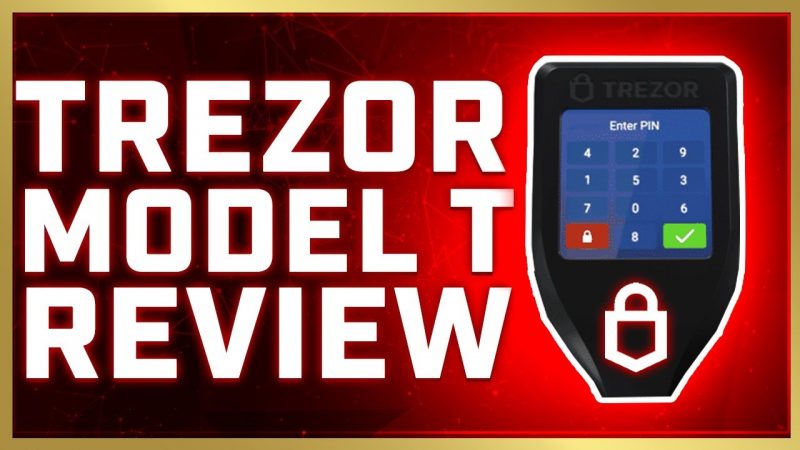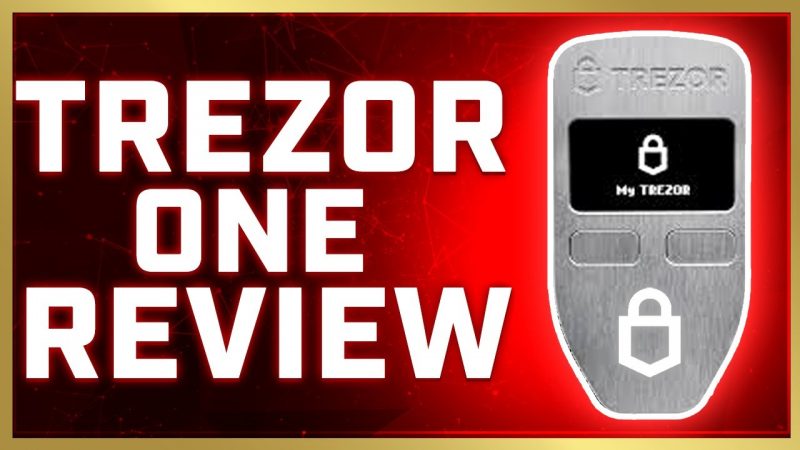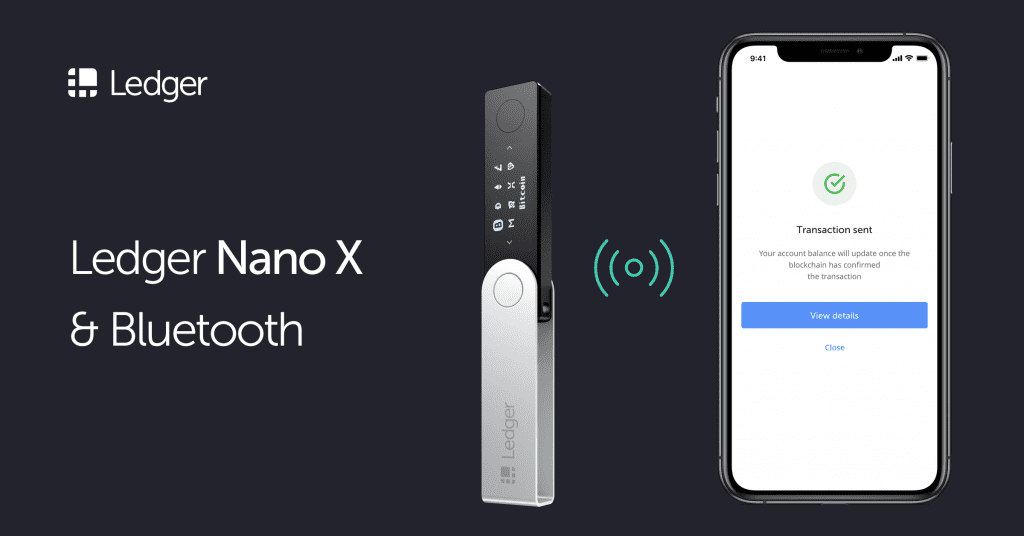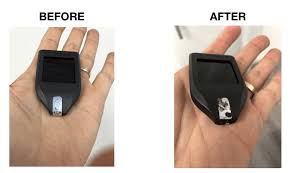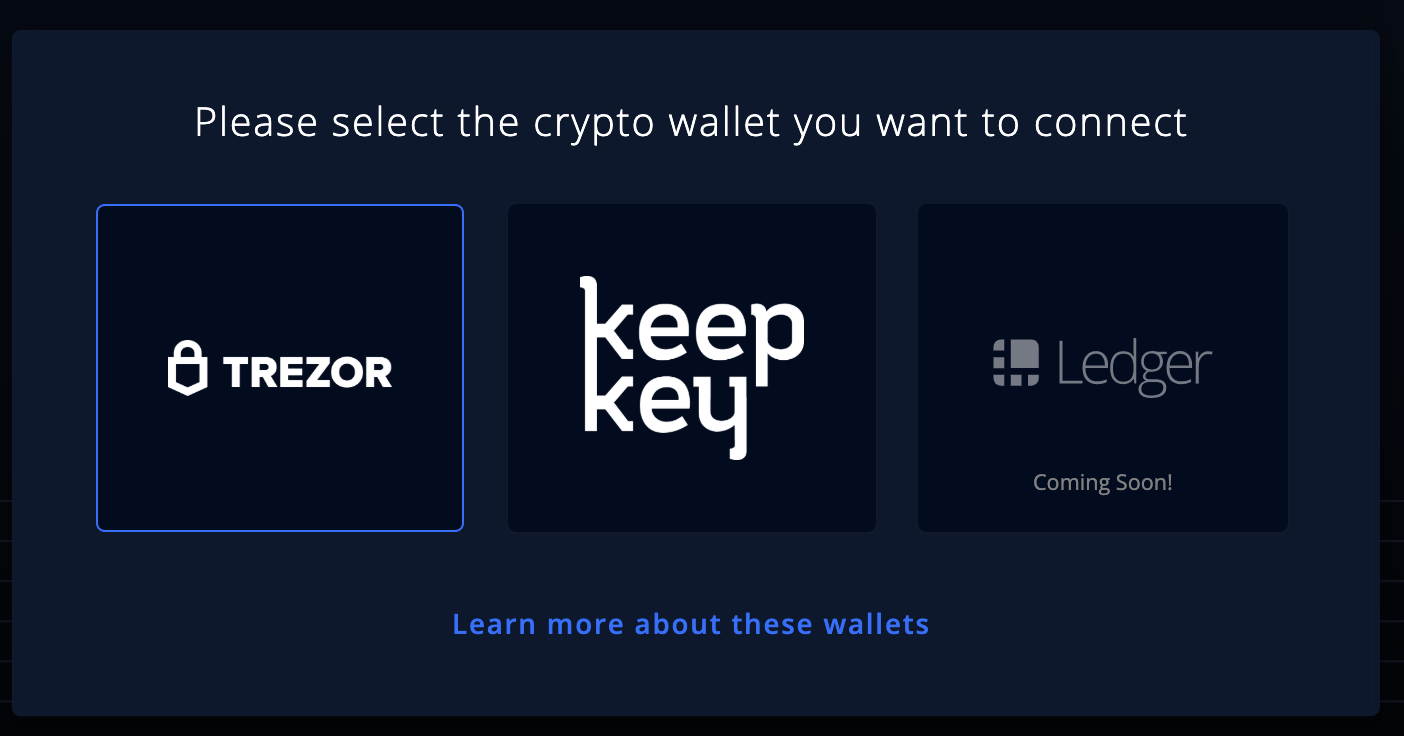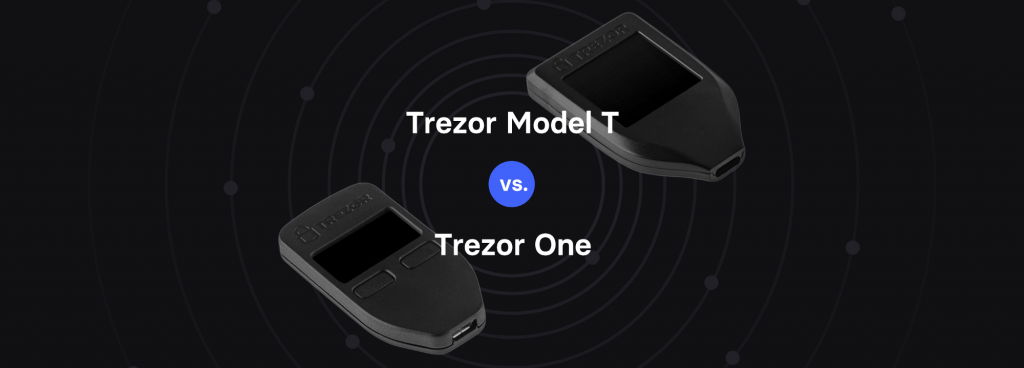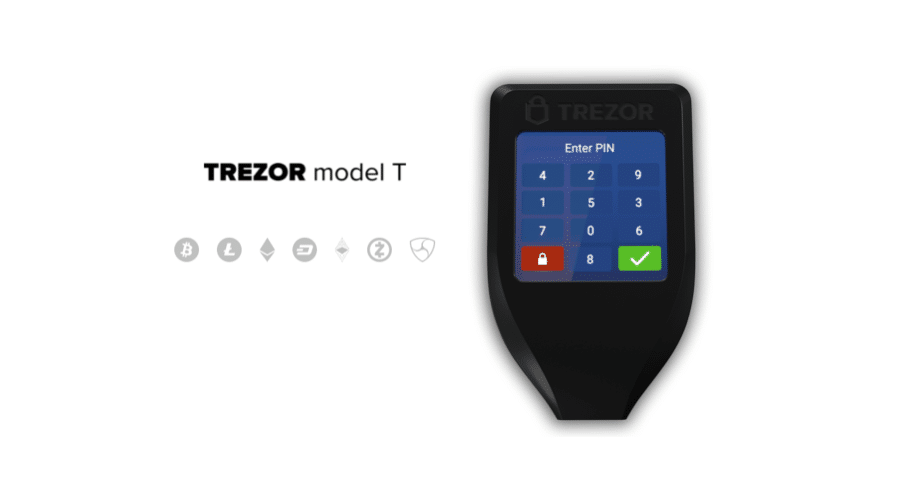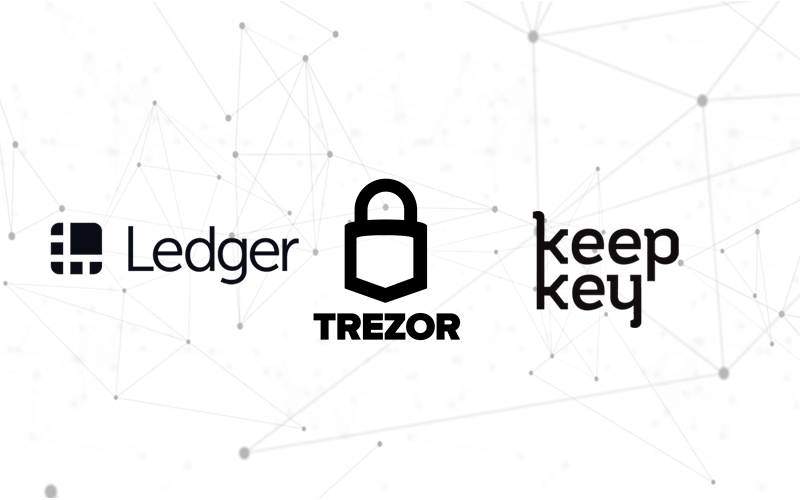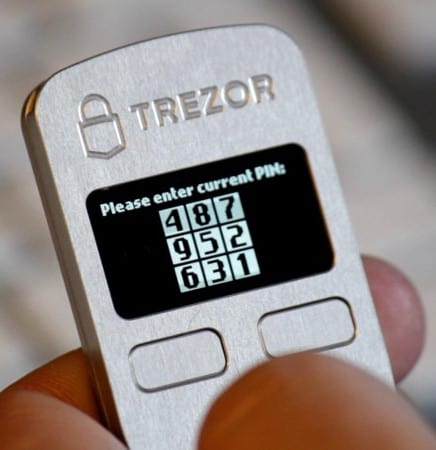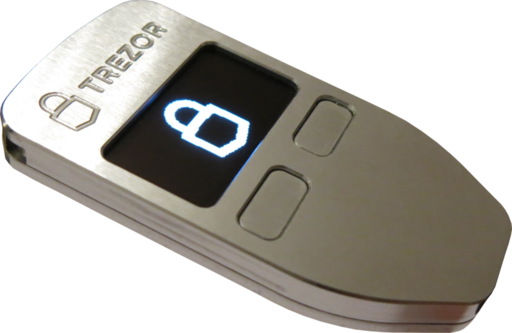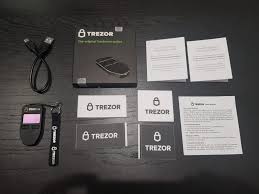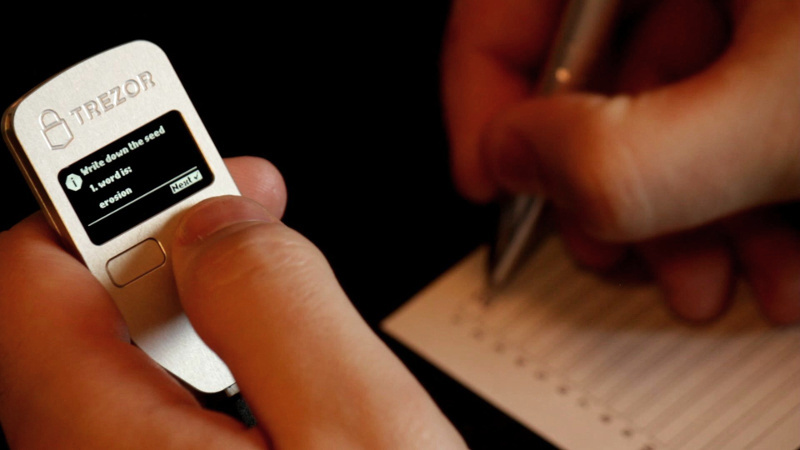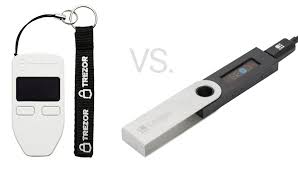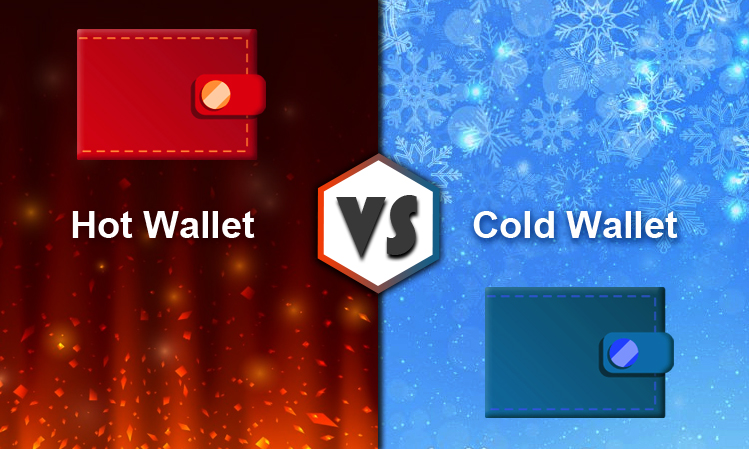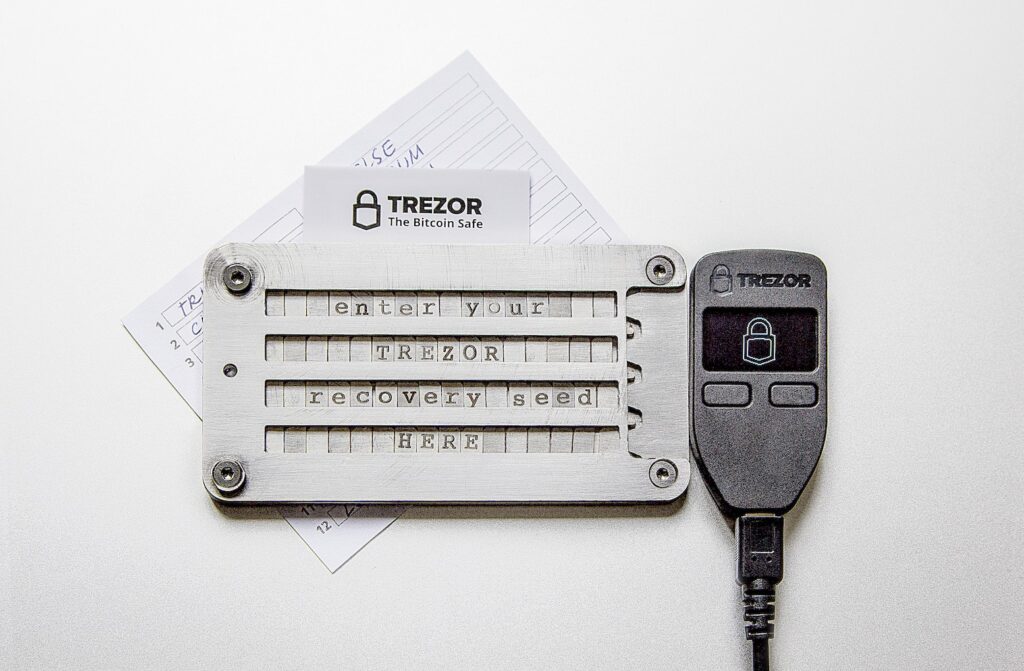- CRYPTO HARDWARE WALLETS
- NGRAVE ZERO
- COMPARE HARDWARE WALLETS
- KEEPKEY VS TREZOR VS LEDGER
- TREZOR VS TREZOR REVIEW
- KEEPKEY VS LEDGER NANO X
- LEDGER NANO X VS ELLIPAL TITAN
- LEDGER NANO X VS TREZOR MODEL T
- D’CENT VS LEDGER NANO X
- SAFEPAL VS LEDGER NANO S
- BC VAULT VS LEDGER NANO X
- BC VAULT VS D’CENT
- BC VAULT VS KEEPKEY
- SECUX V20 VS LEDGER NANO X
- D’CENT VS SAFEPAL
- SAFEPAL VS BC VAULT
- SAFEPAL VS KEEPKEY
- SAFEPAL VS ELLIPAL TITAN
- ELLIPAL TITAN VS KEEPKEY
- ELLIPAL TITAN VS BC VAULT
- ELLIPAL TITAN VS D’CENT
- KEEPKEY
- LEDGER NANO S
- LEDGER NANO X
- TREZOR ONE
- TREZOR MODEL T
- ELLIPAL TITAN
- ELLIPAL 2.0 (1st GEN)
- KEYSTONE PRO
- COOL WALLET S (WIRELESS)
- SAFEPAL S1
- D’CENT
- BC VAULT
- SECUX W10
- SECUX W20
- SECUX V20
- SECUX NIFTY
- KEEVO WALLET
- CYPHEROCK X1
- RECOVERY SEED BACKUPS
- PRODUCT REVIEWS
- VIDEOS
- RESOURCES
- CONTACT US
- Logo
- Facebook




- Instagram






- Twitter






- Youtube






- FREE E-BOOK






Trezor
Ledger Nano X vs Trezor Model T (2020) | Which 2nd-Generation Device Is Better?
Ledger Nano X vs Trezor Model T! In this comparison, we are going to do a head-to-head of two of the most competitive and popular new cryptocurrency hardware wallets in this edition of the hardware wallet roundups. In this comparison, I am going to dive into which of these 2nd-generation wallets is better. How big is your portfolio? Do you need mobile/wireless support? Do you use any 3rd party wallets for integration? Do you need web-based access instead of a required download?
These are all questions you will need to consider when deciding which of these wallets will be best for you. At the end of the day, the coin support is one of the most important factors (besides security) when deciding which hardware wallet is best for you. Ultimately, if if doesn’t support the coins you want to store offline, it won’t work for your particular situation, so keep that in mind as we dive into what I consider to be the most important factors when making a such an important decision, such as choosing a cryptocurrency hardware wallet.
So, let’s get right into the battle of Ledger Nano X vs Trezor Model T!
Ledger Nano X: Overview
The Nano X comes beautifully packaged with the device itself, a USB-C cable, a set of instructions and recovery seed cards. The previous bulky buttons that were on top of the device are now seamlessly integrated on it in a way that’s even a bit hard to notice. All in all a beautiful design. The primary features of this device are the bluetooth connection which allows you to manage this device using your smartphone via the iOS and Android app.
Additionally, you can now hodl, store, or manage up to 100 cryptos simultaneously, all without access to your desktop or laptop computer. This is easily it’s best new features, but aside from the upgraded storage capacity and the wireless connectivity, the device itself is now larger, has an integrated 2-function button, and an overall larger screen for verifying transactions. With a trusted device and a more universal charging cable, this makes it much more compelling to spend the extra money to store more coins and one that you can easily take with you as you travel.
Ledger Nano X: Security
Ledger is at the forefront of developing the industry’s device security. How? And in what ways?
CC EAL5+ SECURE ELEMENT
Only Ledger’s devices can claim the French cybersecurity agency ANSSI’s full certification.
The Nano X and Nano S both feature what is called a ‘secure element’. The chip seen below is the next generation chip that comes in the Nano X:
The secure chip meets the CC EAL5+ certification and run’s Ledger’s proprietary BOLOS operating system.
A Secure Element is a secure chip that…embeds intrinsic countermeasures against many known attacks. This kind of chip is tamper-resistant and protects your device to a range of different attacks.”
Ledger Nano X: User Experience
Honestly, the user experience is a massive upgrade from the Ledger Nano S. With that said, It has a few usability issues that I find to be quite difficult to overcome. Although this device is physically larger than its predecessor, it still has a fairly difficult to use early experience.
For example, the screen is still fairly small and still cannot accommodate a QR code for scanning. This may not seem like a big deal, but after using several hardware wallets, it really does make a big difference. Using a QR code is not only safer (because it removes the chance of error from manually typing in a wallet address), but it is incredibly faster and makes the entire of transacting offline, a much easier experience.
Although this device has stepped up the quality considerably from it’s latest iteration, I still feel that utilizing an all new form factor could have been beneficial and a little more innovative than replicating their 1st generation device with a few small tweaks.
Ledger Nano X: Coin Support
The Ledger Nano X utilizes the “Ledger Live” dashboard which is a desktop application that allows you to manage all of your coins, portfolio, and potential trades in an easy to use application. You can use this on both an iOS or Android app as well as a desktop.
This app allows you to manage up to 1,100 coins that are supported by the device. However, only about 200 of them are “native” apps. This means that you can manage them directly within the Ledger Live app, without having to connect to a 3rd party wallet, such as MyEtherWallet or MyCrypto. I will leave a link HERE with a list of fully supported coins.
Trezor Model T: Overview
The Trezor Model T was ahead of its time (if you ask me) when it came out in early 2018 . It came with many ground-breaking features, such as a touch screen for added security, an SD card slot for signing transactions offline and having additional external storage, and increasing the size of the device while also adding a more universal USB-C port.
This device is a worthy upgrade from its predecessor and added a lot of additional features and security to the way the device is used on a regular basis by adding additional factors of authentication. Additionally, it added a plethora of new coins being supported and increased the RAM size to store a much larger portfolio of coins that you could easily expand and grow into if need be.
Trezor Model T: Security
I will briefly touch on this here as most of this was gone over in depth in my Trezor One Review. As mentioned above, the physical security measures and differences are pointed out in its physicality of it’s packaging, but I will point out that there is one feature that I particularly like that is available on the Trezor Model T.
Both have an option to set a “passphrase” or a 25th seed word when accessing your account. This means that if/when you have to use your recovery seed to restore your device, you not only need the 24 seed words in the correct order, but you will need to enter in the custom passphrase in order to fully restore your wallet.
Here is the main difference on the Trezor Model T. Because the device has a touch screen, both the PIN and the custom passphrase (if you enable it) will be entered in on the device itself, and not the web app. Why is this important? Well, in the event that your web app is compromised or you have a key logger on your computer, you have a separation from your device and what you enter on the web app to unlock or access your device.
The Trezor One requires you enter in your PIN on the web application with a number grid, since it does not have a physical touch screen that allows you to enter it in on the device. Pretty cool if you ask me.
Trezor Model T: User Experience
The touch screen is sleek and very bright, which is nice, but it is also very small. Even if you have average sized hands, you may have difficulty with entering in the pin-code and/or additional “25th seed phrase” as a password on the device. More on that later.
This is one of my biggest complaints as the device itself doesn’t look that good when you’re ready to use it and it has a sticky film when you hold it and un-plug and plug in your device. I will say that this is the worst of your worries as the device is pretty solid and has a lot to offer in terms of security and functionality. The final thing that I noticed this device upon opening it up is it has a very sleek SD card slot that can be used for signing transactions offline and import them.
Trezor Model T: Coin Support
I will leave a link to the official list of what Trezor has listed on their website HERE, but I will point out a few of the coins that this device supports that you don’t really see on other hardware wallets that stands out to me and is what I use on my device as well. The primary coins
NOTE: This device hold over 1,200 coins in total, but the majority of them have 3rd party wallets developed by either the development team for that coin specifically that can be connected, OR major third party wallets that hold hundreds of ERC-20 tokens, such as Mycelium and MyEtherWallet.
Just to name a few coins that are now supported on the beta wallet or (native app wallet) on the web app that is easy to manage and is unique to this hardware wallet is: HoloChain (HOT), Lunyr (LUN), Chainlink (LINK), and Polymath (POLY). They are adding Native support to new coins and tokens all the time, so make sure to keep your eye out for it!
Ledger Nano X vs Trezor Model T: Conclusion
Ultimately, it really depends on how large your portfolio is (or you plan for it to be) and what particular coins you want to hold. They both support over 1,100 coins on both devices, but the Ledger Nano X can only hold 100 assets on your device at once, and The Trezor T can hold much more at once (I have over 210 different coins on there, currently). Also, do you make transactions on the go? Do you need it be able to work without a computer and be able to use on a smart phone?
At the end of the day, I would only spring for the extra $50 price for the Trezor Model T if you needed to hold more than 100 coins on your device at once. They are both very good devices with amazing development teams and reputations, but if you’re fairly new to the game and want a device that will work with your smart phone, I would choose the Ledger Nano X, personally.
So there you have it! Ledger Nano X would be my choice if I had less than 100 assets and didn’t plan on expanding beyond that, but again, each person’s plans and situations are different, so make sure and weigh the pros and cons I’ve listed above in detail to make the right choice for you.
What do you think? Would you choose the KeepKey over the Ledger Nano X? Let us know down below in the comments!
Cheers,
The Crypto Renegade
NOTE: This post may contain affiliate links. This adds no cost to you but it helps me focus on giving as much value as possible in every single post by being compensated for recommending products that help people succeed.
Trezor Model T + Exodus Wallet Review (2020)
In this article, I am going to go over my experience with the Trezor Model T and Exodus Wallet integration and whether or not you should use it. There are a lot of things I like about this desktop wallet and a few that I really don’t, so let’s get into the details below!
Before I do, if you haven’t yet read the in depth review of the Trezor One and The Trezor Model T, then I will link them respective HERE and HERE. This will give some context below for the details of using these hardware wallets in general, before we compare how they work with the a hot wallet integration like the Exodus.
Here are the questions and answers I think you will find most helpful when deciding whether or not to use the wallet integration. Let’s get started!
Exodus Wallet – Overview
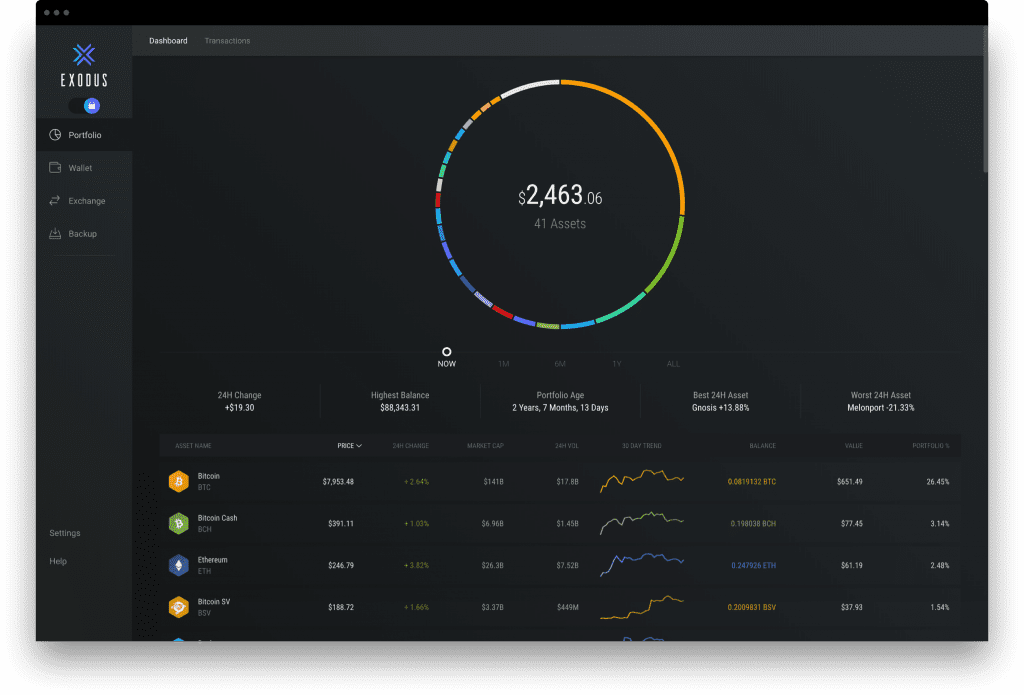

The Exodus Wallet (as mentioned above) is a crypto desktop wallet that you can download for free over at the Exodus Website. Why would I want to do this? Well, first, if you’ve only used a mobile hot wallet, then you’ll know that there aren’t many features or anything really beyond just the send and receive function.
This is ok (most of the time) for a mobile wallet, because you just need it to “work” when you’re trying to make a transaction out in the real world. However, when you’re managing a portfolio, it’s important to see the overall big picture before making some of your larger trading or managing decisions, such as: Overall Total Assets, Percentage Of Loss Or Gain (over a 24hr or 7-day or 30-day window), Percentages Of Asset Distribution, etc…
Not to mention the number of coins or assets supported. Because desktop wallets typically have more features and overall viewing space, you have the capability to manage more assets and do more that just send and receive. The Exodus wallet actually has both a desktop AND a mobile wallet, which is nice for syncing your portfolio between devices.
I am going to list the “Key” features that I found useful below, before we get to how the Trezor Model T integrates with these features to help improve the overall hardware wallet experience.
Features


- Functionality – Exodus provides a high quality user experience, and combines an aesthetically pleasing UI with an intuitive design. The desktop software client contains a wallet, portfolio tracker, and cryptocurrency exchange, and allows users to track their holdings and transactions around the clock, as well as store and exchange a wide range of digital currencies.
- Flexibility – Exodus is available to Windows, Mac, and Linux users, and in addition to its internal integrated features, Exodus also provides an easy to use mobile app that is currently available to iOS users with Android support planned for the future. It also supports over 100 cryptocurrencies including popular currencies such as Bitcoin (BTC), Binance Coin, (BNB), Litecoin (LTC), EOS, and Monero (XMR). Ethereum (ETH) and a host of ERC-20 tokens are also supported.
- Security – As a “hot” wallet, Exodus requires its users to create and use secure passwords, and when first installing the wallet, users are provided with a 12-word recovery seed phrase that is used to restore the wallet in the case of an emergency. The wallet also integrates with a Trezor hardware wallet and doesn’t require any personal information, and users’ private keys and transaction data are encrypted and stored locally on their devices.
- Customer Support – Despite not operating as an exchange, the team provide a good range of support including their resource page which contains an FAQ section and over 100 articles, and their video The status page gives a quick overview of any issues that the team are experiencing, and they can be contacted via email. They also run a Twitter account, Facebook page, and Slack channel.
This is a full multi-currency wallet and will continue to add more coins being supported soon, including Tezos (XTZ) and some pof the newer TRC-10 and TRC-20 tokens. This is always evolving for the better.
Coins Supported
Exodus supports 103 cryptocurrencies in total (coins and token). The most notable coins supported by the wallet are:
- Bitcoin
- Ethereum
- Ripple
- Litecoin
- Bitcoin Cash
- Binance Coin
- Tether
- EOS
- Monero
- Dash
- Raven Coin
- Stellar
- Tron
- Bittorent
These are just a few notable coins, but you can find a full list of coin support HERE. This page is always evolving and will continue to add more coin support in the future.
Trezor Model T – Integration
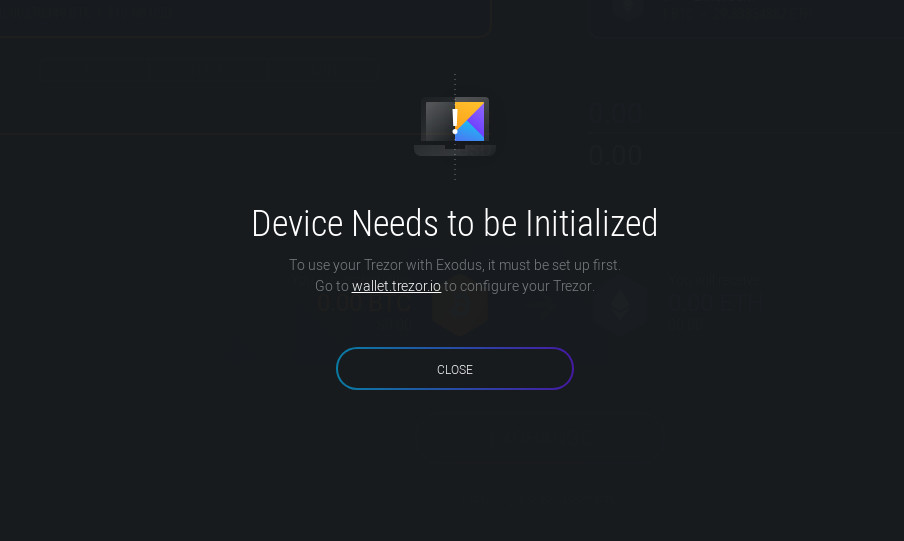

This is a major upgrade from the Trezor web app, and apparently even Trezor agrees. You can setup your Trezor Model T from scratch (like I did) and it’s a very seamless experience. The good news is if you decide to go back to using the web app, all of the features will be enabled, with the exception of the optional 25th seed phrase password when doing the initial setup on the device. This can easily be enabled once you login to the web app and is a security feature I use, personally,
Managing my portfolio, especially certain coins like Ripple and Monero, is a lot easier here, because I don’t need extra software or other add-ons like you would individually if you didn’t use i.e. Exodus. This makes managing ALL my important coins in one place, much less of a hassle. I prefer to actually manage my coins on this wallet, because it’s a one stop shop, so to speak.
(Note: Exodus uses an exchange integration and that is where they make the bulk of their money, since this is a free downloadable wallet. In my experience, the fees were a little too high for me, but the coin management and portfolio management more than makes up for it)
Does it Work With Trezor One?
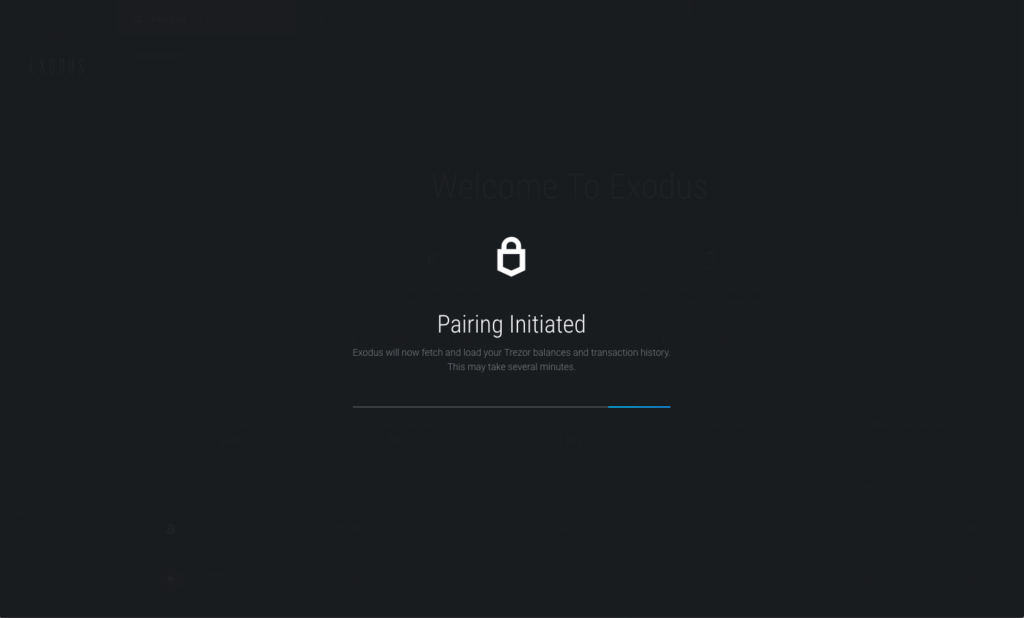

Yes, but not all coins are supported by the Trezor One firmware. Essentially, all coins and tokens that are supported on the Trezor web app willl be supported in this software wallet. You can view the full coin support and setup HERE. If there is any doubt, any coins or tokens not supported on this 1st generation device will be greyed out.
Exodus Wallet – Conclusion
Overall, using the Exodus Wallet has been a pleasant experience. I would absolutely recommend trying it out for managing your Trezor One or Trezor Model T, if you haven’t already. There is no KYC or personal information asked when you set it up, and when using the Trezor, your private keys are always protected. As I mentioned above, my only negative was the fees that are associated with the integration were way to high for me. If they lowered it, it would be the perfect solution to trade assets offline, which if preferable.
Other than that, it’s one of the best crypto management experience’s I’ve used. And when you’re serious about protecting your private keys like I am, and you need to manage or hold specific assets that you can’t directly manage on the web app, this is a really good solution. The closest thing to this is the recent Trezor integration with ShapeShift, which you can check out my review of that HERE.
What do you think? Is Exodus Wallet a good contender for managing your assets on your Trezor device? Let me know below in the comments.
Cheers,
The Crypto Renegade
NOTE: This post may contain affiliate links. This adds no cost to you but it helps me focus on giving as much value as possible in every single post by being compensated for recommending products that help people succeed.
Shapeshift And Trezor: Multiple Hardware Wallets Now Supported (2020)
In this article, I am proud to announce that there is a new non-official partnership between Shapeshift And Trezor. Let me elaborate. The newly launched platform of Shapeshift’s all-in-one trading platform not only supports the KeepKey, which is now owned by Shapeshift, but it also integrates with Trezor One and Trezor Model T to manage and trade your assets through cold storage. They also have announced plans to support the Ledger Nano S and not too far after that, the newly released Ledger Nano X device.
This is a huge step forward for non-custodial trading with an emphasis on keeping your private keys in your possession the entire time. This is unlike many popular exchanges, like Binance, Kucoin, or even Coinbase. Maintaining financial sovereignty is a cornerstone of what Shapeshift is trying to achieve with the release of this new platform. I personally tested this platform while it was just in the beta stage and I have been raving about it ever since. I wrote an in-depth review of this platform and it’s features which you can read HERE.
Do I Need An Invite To Try It Out?


When the beta was released it was invite only, but this platform is now live and accessible for Shapeshift account members for free. I will link the announcement of their release that I wrote HERE, and you can now signup for a free account HERE.
(NOTE: You will need a compatible hardware wallet in order to use the platform to perform any trades. This is for your security in mind and makes for a seamless experience. If you do not have KeepKey or Trezor, you can get them by clicking the links below to obtain them directly from the manufacturer.
Can I Use My Trezor Model One AND Trezor Model T?
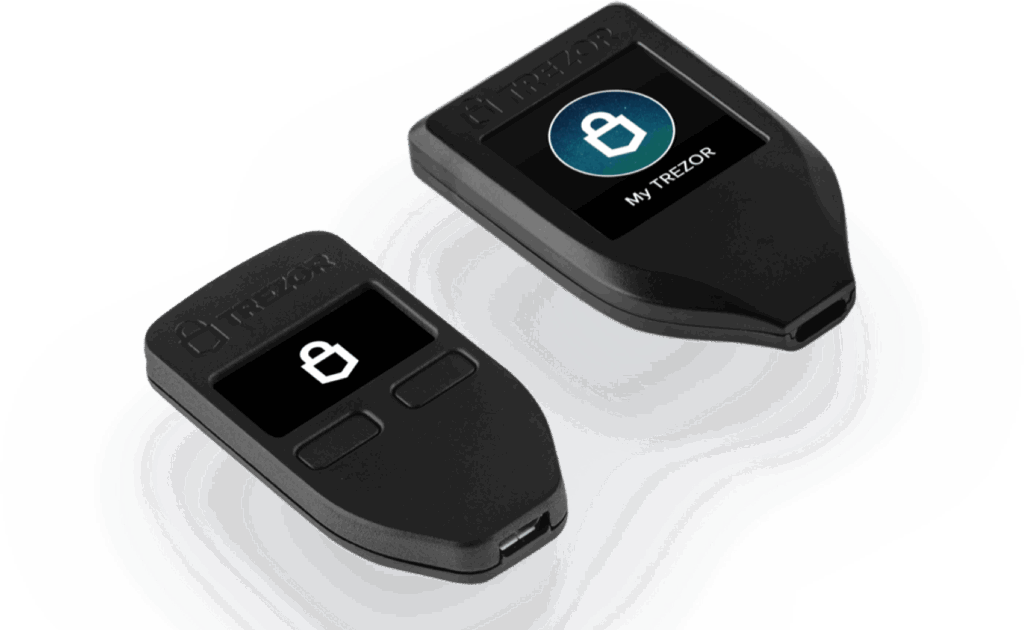

Yes. Both devices are compatible with the platform, and I recommend you initialize and setup the devices through Trezor.io first, before you connect to this platform. This will ensure that your security PIN and recovery seed phrases are properly in place before you connect it to this new platform. In my personal experience in testing, managing your trades, balances, and portfolio from the Shapeshift platform has been easier to use than on Trezor’s own web application.
Below is a video tutorial of how to setup your Trezor and connect it to the platform seamlessly. Please comment down below if you have any questions or concerns on this process. You WILL need to ensure you have the Trezor bridge installed on your machine in order to use this platform.
Shapeshift And Trezor: Are There Any Other Hardware Wallets Supported?
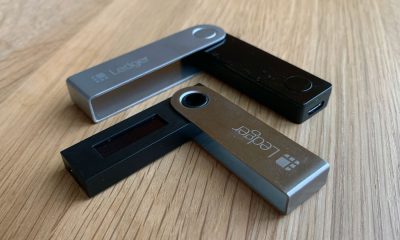

As mentioned above, there are plans to add support for the Ledger Nano S, very shortly. Unfortunately, there is no official ETA, but some non-official sources have told me that the wait will not be long. After this has been tested and verified, support for the Ledger Nano X will be tested and approved as well. There has been no word on whether or not the discontinued Ledger Blue device will be supported or not.
Again, I recommend that if you have a brand new device that you set it up and initialize the device and ensure it’s on the latest firmware version before connecting it to the platform. This article will be updated when they officially announce the Ledger support for the platform and I’m sure there will be an official press release from Shapeshift.
Conclusion
Overall, I can’t say enough good things about this new platform and my primary source for managing my own portfolio on my KeepKey and Both Trezor devices. It really makes managing and trading assets extremely easy and intuitive. If you don’t already have a hardware wallet, I will leave a link below for the KeepKey (My favorite hardware wallet currently), and in conjunction with the new release, I will leave you a 50% off discount code to pick it up for under $40.
That is a STEAL, and will make it the cheapest hardware wallet you can get at the moment. This is a limited time offer, so make sure to act fast! If you are unfamiliar with the basics of how to keep your cryptocurrency safe, you can download my free in-depth e-book on the subject HERE.
Use coupon code “GENESISFOX” at checkout get the discount by clicking the above link.
What do you think? Are you going to try the new shapeshift trading and management platform? If not, what other platforms do you prefer? Let me know down below!
Cheers,
The Crypto Renegade
NOTE: This post may contain affiliate links. This adds no cost to you but it helps me focus on giving as much value as possible in every single post by being compensated for recommending products that help people succeed.
Trezor One Vs. Trezor Model T – Is One A Clear Winner? (2020)
In this article, we are going to unravel the differences between the Trezor One Vs. Trezor Model T. I have been personally using each of these devices for years. The Trezor One first made it’s debut in August 2014 and was the first commerical hardware wallet out on the market. It paved the way for many competitors and started a revolution with a mission of keeping your private keys safe and completely offline in your control.
The Trezor Model T was unveiled in 2018 after years of development and tweaking. I was a reseller at the time and I received one of the first batch of devices to test out and even actually did a tear down and compared the internals and was very interested to see the differences between the two devices. Before that occurred, I tested it with many different coins and was a very pleasant experience.
They have even added a large number of “Native” apps (or coins) that were supported with their web-based wallet, and they will continue to do so for years to come. But does that make the Trezor One irrelevant now? Stay tuned for the whole article to find out!
First Look And Unboxing
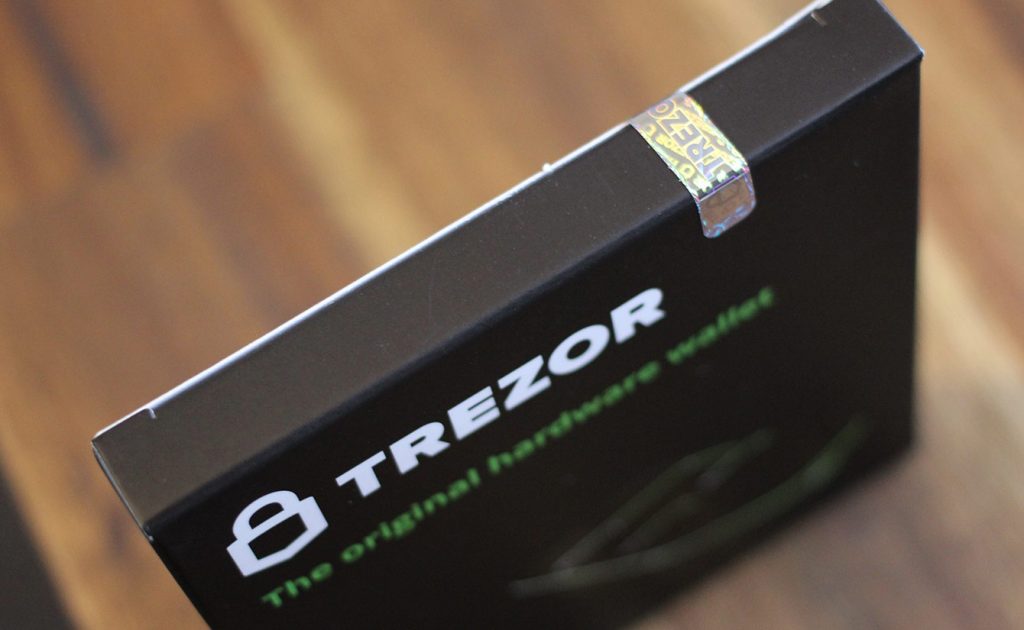

The Trezor One is a very simple device and yet, the complexity comes in it’s security packaging. Let me explain. The device is in the shape of a small plastic trapezoid with 2 mechanical buttons and a small OLED screen. When you first receive the device, it comes in a small plastic box and you will see that it has 2 holographic anti-tampering stickers on the box covering the seals. One is on the top and one is on the bottom.
This was put in place to not only show if the box has been tampered with, but also has some visual clues that reveal it’s authenticity. This was put in place as a preventative measure and to avoid supply chain attacks. Additionally, it has some vert strong adhesive glue that is designed to destroy the box in it’t opening.
This self-destructive box again is a secondary security measure designed to reveal if the box has been tampered with it’s journey from the manufacturer to the end user. In my opinion, it’s very simple, yet clever solution, as MIM attacks and supply chain attacks are a very real threat.
The Trezor Model T, however decided to go with a much simpler box design that does not include these contraptions. Why? Well, they decided that evidence of tampering really only matters on the device itself, so they forewent the process of securely packaging the device. Instead, they decided to put a very adhesive and protective seal on the device itself over the USB-C port.
The one downfall of this design, is that it when you unbox it and peel off this protective seal, it leaves a very sticky and noticeable sticky residue that is VERY difficult to take off. And as the device is plastic, it cannot be removed or scraped off, as it will completely scratch the device. I touched on this on my dedicated review of the Trezor Model T that I wrote HERE.
Trezor One Vs. Trezor Model T: Supported Coins
This in my opinion is the large differentiator between these two devices and the distinction will ultimately sway most of you in deciding which device you should buy. Both coins have a lot of the same coin support, at least in terms of the larger cap coins and what is supported in third-party wallets, such as MyEtherWallet or Mycelium.
I will note the primary difference here is noted in the available “Native Apps”. What are Native Apps? These are the wallets built directly into the web application that Trezor has built to manage your coins directly on your platform. They are very easy to use, manage, and view in a very easy manner. This is NOT the case when you deal with certain coins that are only supported with 3rd party integrations. As a result, they are fundamentally better for the end user.
I am going to list a handful of what I consider the notable coins that are supported by these native apps and differences. I will not overlap these and point out some coins that are only supported by the Trezor Model T, and NOT supported on the Trezor One. Note this below:
Dash (DASH)
Digibyte (DGB)
Vertcoin (VTC)
Namecoin (NMC)
Dogecoin (DOGE)
Trezor Model T Supported Coins:
Ripple (XRP)
Ethereum (ETH)
Chainlink (LINK)
Holochain (HOT)
USDcoin (USDC) *Stable Coin*
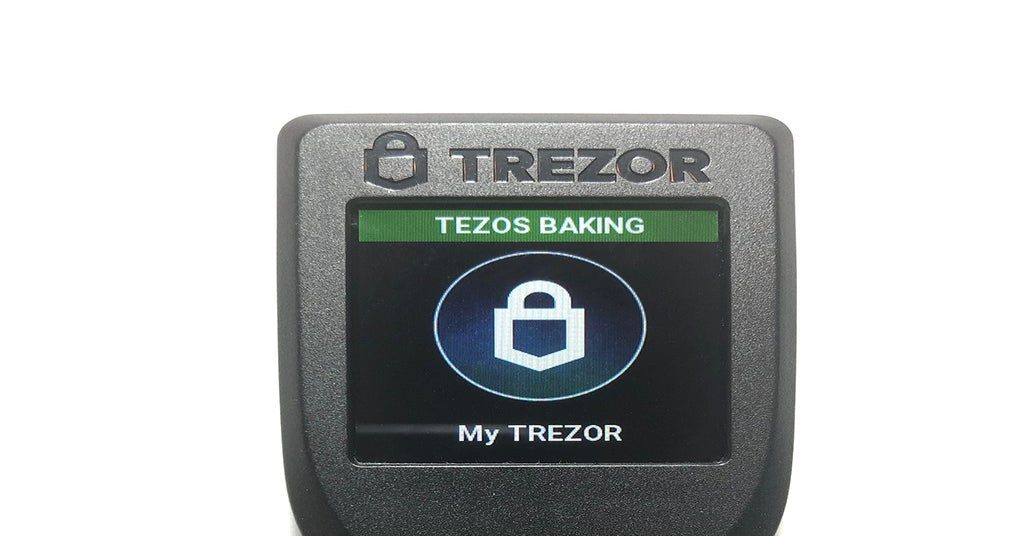

This is just a brief example of some popular coins that are supported on each wallet natively using Trezor’s web app. Ther are some additional coins that are supported on the Trezor Model T through 3rd party wallets that will not work with Trezor One, such as Tezos (XTZ) and Monero (XMR).
This is important to know, as there are over 1,000 ERC-20 tokens that are expanding into native app support by Trezor Model T, that is not going to be supported by Trezor One, however, using some 3rd party wallets, will still support them, if you’re so inclined.
Trezor Security
I will briefly touch on this here as most of this was gone over in depth in my Trezor One Review. As mentioned above, the physical security measures and differences are pointed out in its physicality of it’s packaging, but I will point out that there is one feature that I particularly like that is available on the Trezor Model T. 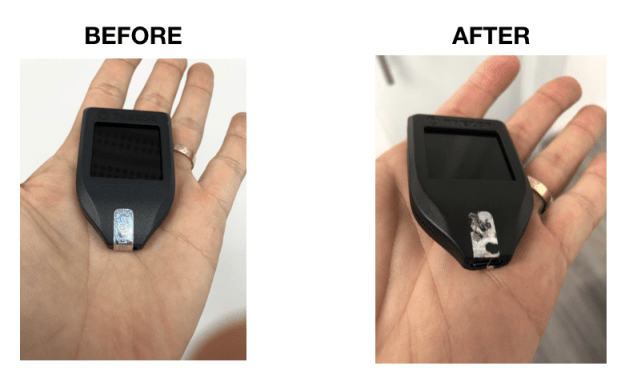

Both have an option to set a “passphrase” or a 25th seed word when accessing your account. This means that if/when you have to use your recovery seed to restore your device, you not only need the 24 seed words in the correct order, but you will need to enter in the custom passphrase in order to fully restore your wallet.
Here is the main difference on the Trezor Model T. Because the device has a touch screen, both the PIN and the custom passphrase (if you enable it) will be entered in on the device itself, and not the web app. Why is this important? Well, in the event that your web app is compromised or you have a key logger on your computer, you have a separation from your device and what you enter on the web app to unlock or access your device.
The Trezor One requires you enter in your PIN on the web application with a number grid, since it does not have a physical touch screen that allows you to enter it in on the device. Pretty cool if you ask me.
Trezor Prices
The Trezor Prices are pretty significant in terms of the difference between the Trezor One and the Trezor Model T. As we’ve discussed above some of the differences of coins that are supported and the overall design, the prices are pretty notable as these devices cover a lot of the same ground. The current prices are listed below as of this writing:
Trezor One – 69 Euros or Approx. $78.00 USD
Trezor Model T – 149 Euros or Approx. $169.00 USD
This means that for the almost the same level or security you can get the original hardware wallet, the Trezor One for $91 less than the upgraded model. However, you have a lot more room to grow in terms of coins and token supported natively on the Trezor Model T, which means it will be more “future proof” and more expandable than the original.
Setup And Recovery Seed Differences


The primary differences in the two devices is fairly straightforward. The Trezor One includes a 24-word seed phrase when setting up and backing up your device. The Trezor Model T includes a 12 word seed phrase when you receive the device and that limitation is indicated on the included recovery seed cards in the box.
Why did they make this difference? Whether you choose a 12, 18, or 24 word seed phrase, it ultimately includes the same level of security. Additionally, since the Trezor Model T includes the option to set a custom passphrase you can enable on the device in addition to requiring the PIN, they felt that it was extra secure that way, although it’s optional.


Trezor Vs. Ledger Vs. KeepKey
The highest end device of these 3 is going to go to the Trezor Model T. Not because of the price tag, but because of the extra security features and the vast coin support that is way ahead of the competition currently. The Ledger Nano X is on par with this and even allows you to manage your device via bluetooth and can hold up to 100 apps directly on one device, which has it’s own edge over the rest. 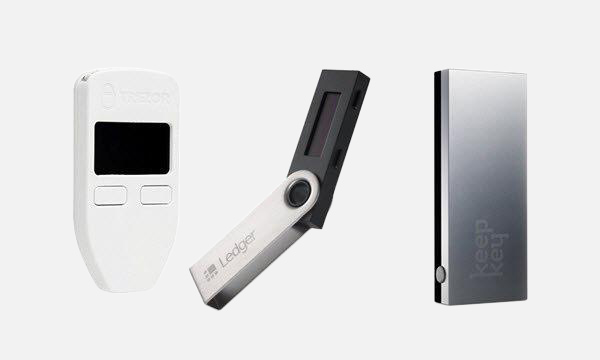

The KeepKey is one of the oldest devices, but it is the “nicest” in terms of it’s physical presentation as it’s a very solid and sleek device that just “feels” premium. Additionally, it is going to release their new platform very soon that integrates directly with native coin support and non-custodial trading directly on the hardware wallet, that makes it probably the safest trading experience I have seen yet. I have tested this platform and have a detailed review of it HERE.
Additionally, if you want more details on the key differences of these devices, I will link that specific article here that I wrote entitled “KeepKey Vs. Trezor Vs. Ledger – Which One Should I Buy? (2019)“.
Conclusion
So which one is better? Well, to be honest there is no clear cut answer and it varies for each person. Here’s how I would put it to you. Are you going to be getting more and more into crypto and expanding into more altcoins as time goes on? If so, go with the Trezor Model T. If you are simplistic and you just want to “HODL” Bitcoin, Ethereum, and maybe a few other larger cap coins for a long period of time? Then Just got with the Trezor One.
The truth is, both will continually receive security and firmware upgrades as time goes on and will be very usable for years to come. In this professional’s opinion, it really comes down to any specific coins you want native support for (VERY IMPORTANT) and if you plan on expanding. You can’t go wrong with either one, as they have stood the test of time and I’ve used both for various coins over the years and I’ve seen the positive changes in both devices. Click the links below to buy The Trezor One and The Trezor Model T below directly from their website!
***CLICK HERE TO BUY THE TREZOR ONE WALLET***
***CLICK HERE TO BUY THE TREZOR MODEL T WALLET***
What do you think? Would you choose the Trezor One Or Model T? Which one do you use? Sound off below!
Cheers,
The Crypto Renegade
NOTE: This post may contain affiliate links. This adds no cost to you but it helps me focus on giving as much value as possible in every single post by being compensated for recommending products that help people succeed.
Trezor Model T Review – Best Hardware Wallet Yet? (2020)
In this article. I am going to provide you with an in-depth Trezor Model T Review! The Trezor Model T Is the second generation device in the Trezor family and it came with a plethora of upgrades and a new capacitive touch screen for authorizing transactions, firmware updates, and entering in your security pin on the device itself versus the one the web application as with the Trezor One.
I also recently wrote an in-depth review of the Trezor One, which you can find HERE if you’re interested and I will be writing a comparison review shortly between both Trezor models. 


Additionally, before I jump into the review of the Trezor Model T, I wanted to point out that I just wrote an in-depth guide on the 5 best ways to secure your cryptocurency in the form of a free e-book. It goes over some basic and advanced techniques to make sure that your crypto is the safest it can possibly be and provides you some tips and tricks to ensure your private keys stay protected forever. You can get that free e-book HERE.
Ok, phew, here we go, let’s get to the full review of the Trezor Model T Below! You will also find an attached video of the unboxing at the end. Let’s do this!
Trezor Model T First Impression And Unboxing


So when you first get the box in your hand, you’ll notice that it is substantially different than the Trezor One box. First off, it’s covered in plastic and then is a slide out box that separates into two parts (see video below). When you go to open the box, you’ll notice there are no security seals or holographic tapes on the box to promote anti-tampering and has a window on the box that shows the device in a display window.
It has a magnetic clasp that you can use to open the box where you will find the device sitting on a foam cushion that is surrounding the device and a blank black box with a green sticker right next to it.
Here is the reason why there is no security tape on the box when you first go to open it (unlike the Trezor One). The security tape is on the device itself covering the USB-C port on the bottom of the device and they have decided to bypass the security measures on the box. I understand why they made they choice and wanted to narrow down the security to the device itself from any side-channel attacks or MIM attacks. However, when you peel off the security tape, it purposefully leaves a very sticky residue on the device and it since it’s plastic, it is very difficult to get off without scratching it.
The touch screen is sleek and very bright, which is nice, but it is also very small. Even if you have average sized hands, you may have difficulty with entering in the pin-code and/or additional “25th seed phrase” as a password on the device. More on that later.
This is one of my biggest complaints as the device itself doesn’t look that good when you’re ready to use it and it it has a sticky film when you hold it and un-plug and plug in your device. I will say that this is the worst of your worries as the device is pretty solid and has a lot to offer in terms of security and functionality. The final thing that I noticed this device upon opening it up is it has a very sleek SD card slot that can be used for signing transactions offline and import them.
***CLICK HERE TO BUY TREZOR MODEL T FROM THEIR OFFICIAL SITE***
What Coins Are Supported?


I will leave a link to the official list of what Trezor has listed on their website HERE, but I will point out a few of the coins that this device supports that you don’t really see on other hardware wallets that stands out to me and is what I use on my device as well. The primary coins
NOTE: This device hold over 1,200 coins in total, but the majority of them have 3rd party wallets developed by either the development team for that coin specifically that can be connected, OR major third party wallets that hold hundreds of ERC-20 tokens, such as Mycelium and MyEtherWallet.
Just to name a few coins that are now supported on the beta wallet or (native app wallet) on the web app that is easy to manage and is unique to this hardware wallet is: HoloChain (HOT), Lunyr (LUN), Chainlink (LINK), and Polymath (POLY). They are adding Native support to new coins and tokens all the time, so make sure to keep your eye out for it!
Does this work with any 3rd party wallets?
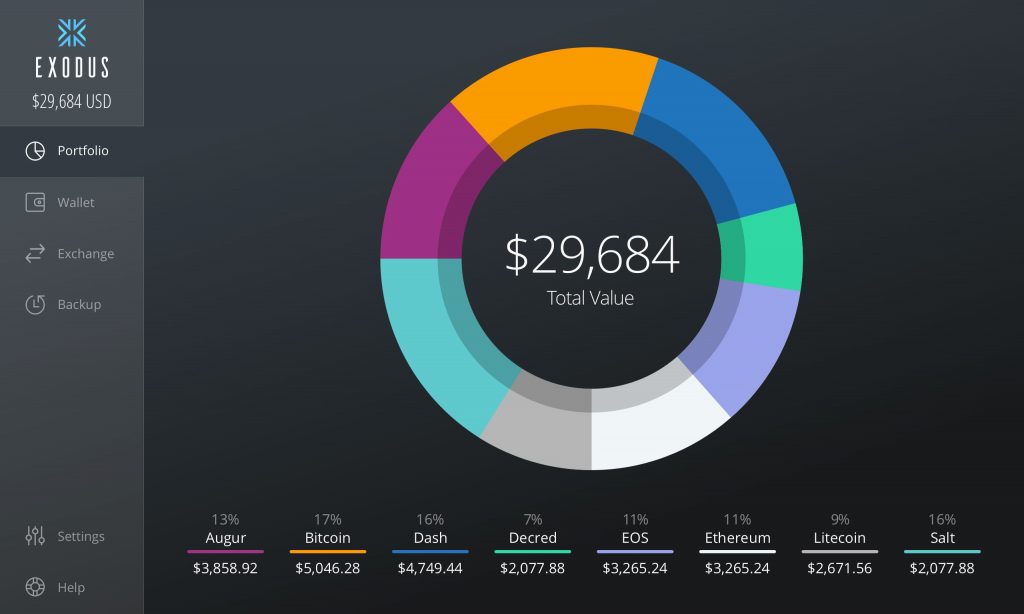

Yes. Although I personally recommend using the native apps on the web application on the Trezor website. Why? Because it’s easily managed and located in one place. Additionally, because this wallet for managing is web-based you can easily take this wallet and manage your coins on the go without having download multiple wallets and setting it up and import it when you may not have access to the same computer.
This is safe to do because this hardware wallet is completely resistant to malware or any other viruses that may be present on unknown or public computers.
In regards to 3rd party wallets, there are a handful that are known to work and integrate directly with the Trezor Model T (and Trezor One) such as: MyEtherWallet, Mycelium, MyCrypto.com, and the newly announced partnership between Trezor and Exodus!
I will be doing an in-depth review and video on the Trezor user experience with the Exodus desktop wallet very soon! It looks very promising and they have hyped it up as a much better user experience than the standard web-based wallet, so we will see that review in the next week or so.
How Do I Set It Up?
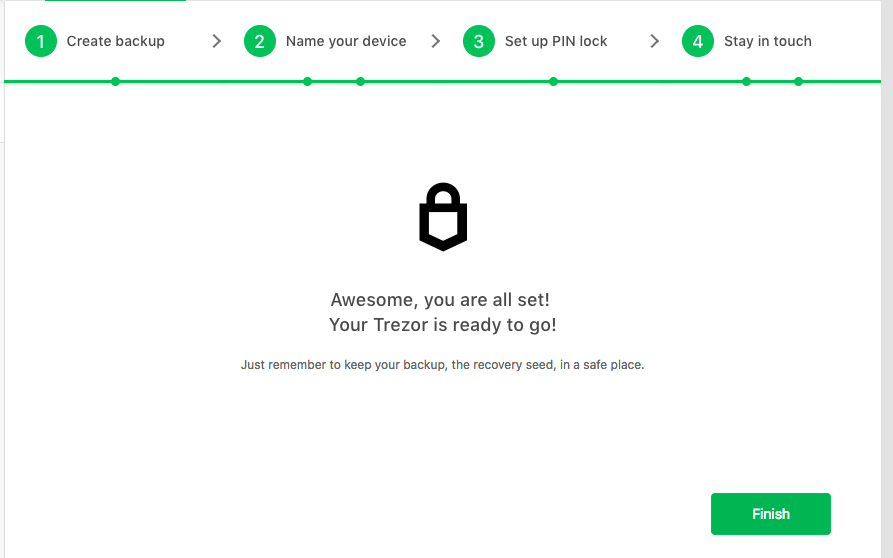

Once you take the device and remove the security tape and unbox your recovery seed cards and the USB cable, you will open an internet browser tab and visit Trezor.io/start. This will take you through the process of downloading the “Trezor Bridge“, which is a small downloadable executable file that is required to use your wallet with the web app. Once you download this, you will follow the prompts on your device to download and install the latest firmware update.
NOTE: As a security measure, Trezor ships the device with no firmware installed to ensure that your device is activated properly when you set it up for the first time and the proper firmware will be activated with Satoshi Labs signed firmware. This ensures that no one can alter or tamper with the firmware of inject any malware in the device after it is shipped before it lands in your hands.
Once this firmware update is done, it will ask you on the web app to create a new wallet (recommended for new users) or import an existing wallet. You would only choose this option if you are trying to restore a previous wallet from on older recovery seed.
If you choose the new wallet option, it will prompt you to write down your recovery seed words on the card provided to you in the box and the words will display in succession on the device and will have you verify them in the correct order before the device is fully activated.
Once this has been created and you have decided if you want a 25th seed word as an extra layer of protection (I STRONGLY recommend that you do), you can now send, receive, and view the available coins in your dashboard!
***CLICK HERE TO BUY TREZOR MODEL T FROM THEIR OFFICIAL SITE***
Does It Support Monero And Ripple?


Yes and No. Let me explain. First, let’s talk about Monero support with the Trezor Model T. Although the firmware is setup to support this coin, there is currently no wallet that has been setup to use with it yet. This is currently in development and you will need to periodically check the Github page setup by Trezor to monitor the status of this, or await the newsletter that Trezor will inevitably send out once this is activated.
NOTE: I recently wrote an article HERE that goes over the 4 best Monero wallets, which includes hardware wallet support with the Ledger Nano S, albelt with the integration of a 3rd party wallet. 

What about Support for Ripple (XRP)? Yes. Ripple has an easy to use native application that has recently been added to the web app for Trezor Model T. I have personally used and tested this and I am pleasantly surprised on how easy it was to manage. In fact, it was an even better experience than I’ve used with Ledger in regards to XRP.
How Does Trezor Model T Compare To Ledger And KeepKey?
Overall, this is a higher end wallet that supports many more coins than either Ledger or KeepKey. Additionally, it offers a touch screen for ease of use and independent security that is managed on the device itself. This includes being able to type in a custom password of “25th seed word” to access the device whenever it is connected or having a wallet being restored, in addition to the standard security PIN code. 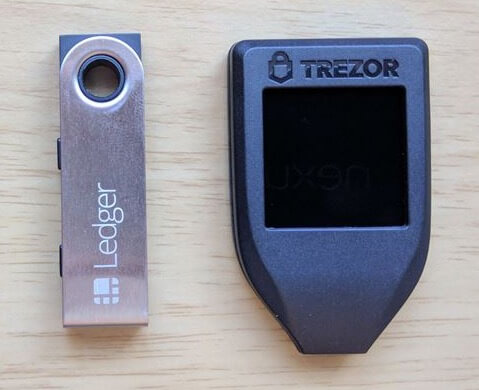

This also means that it is more expensive. The current price of the Trezor Model T is 149 Euros or approximately $169 USD at the time of this writing. Ultimately, it depends on how many coins and WHICH coins you are specifically looking to hold on your hardware wallet.
If you are a beginner and you only want to hold the main higher market cap coins, like Bitcoin, Ethereum and Litecoin, then you really just need an entry level device, like the Ledger Nano S or The Trezor One. 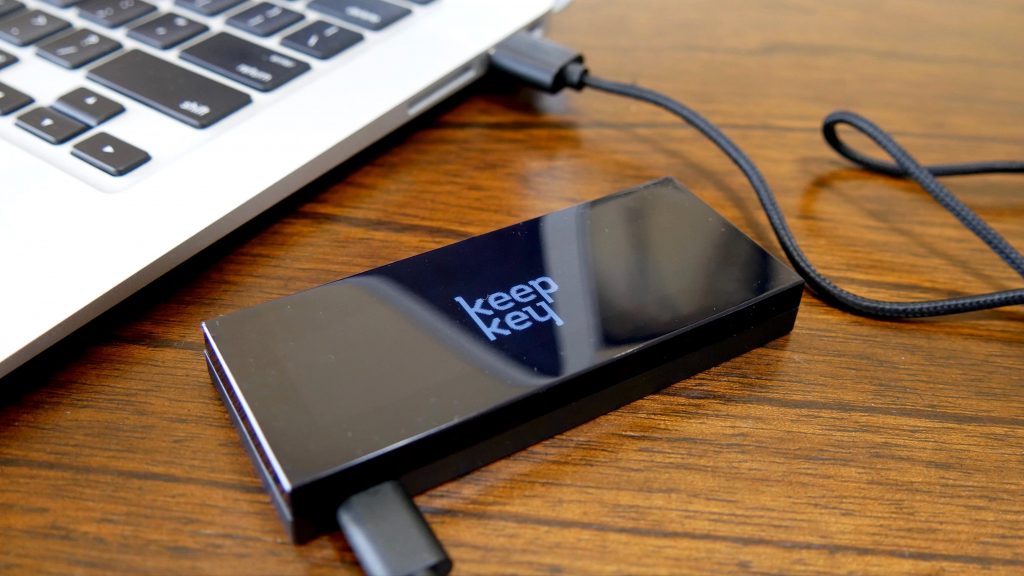

However, If you want to be able to trade and swap coins directly on your hardware wallet without exposing your private keys, I would recommend going with KeepKey. They have a new platform (currently in beta, check out my in-depth review HERE) that allows you to trade on the ShapeShift platform while having your device connected and you never have to give up your private keys. This will be key if you are trying to be primarily trade, instead of just sit and hold.
***CLICK HERE TO BUY TREZOR MODEL T FROM THEIR OFFICIAL SITE***
Conclusion
So what’s the bottomline? I would recommend the Trezor Model T to anyone that is trying to expand their coin selection and are smart enough to know they need to keep their coins on a hardware wallet at ALL times. This wallet will continue to expand it’s coin support and they have already grown this support dramatically over the last 12 months. If there is a coin in particular that it currently doesn’t support on it’s web app, there is a STRONG chance that it is either supported with a 3rd party wallet you can integrate this with, or it will be natively supported very soon.
If you are just looking to buy and hold Bitcoin and Ethereum (or even Litecoin), you really don’t need a device as nice as this. At least not yet. As you understanding of this technology and your taste for new altcoins grows, you will probably want to expand into a new wallet, and in fact, it’s quite normal for people to have more than one active hardware wallet at once to diversify and protect themselves as well.
Additionally, you may want to consider using a device like CryptoTAG, as a metal backup to your recovery seed card, if you are holding enough funds that you want to have a backup of your backup. This makes sense for anyone that is holding more funds on their hardware wallet, than they actually paid for the wallet. This is actually not that much, so make sure you download the free e-book I mentioned above, so you can get the free tips above.
What do you think? Is the Trezor Model T the best hardware wallet out there today? Let me know in the comments below!
Cheers,
The Crypto Renegade
NOTE: This post may contain affiliate links. This adds no cost to you but it helps me focus on giving as much value as possible in every single post by being compensated for recommending products that help people succeed.
4 Best Monero Wallets To Store Your (XMR) Offline (2020)
In this article, I am going to go over the 4 best monero wallets to store your Monero (XMR) offline in (2019). As an advocate for privacy, I strongly believe in the value proposition of this coin. Monero is a unique flavor of privacy and being able to have coins on a blockchain, while still remaining completely anonymous and untraceable. This coin has been in and around the top 10 market cap for the past several years and is currently hovering around number twelve at the time of this writing. 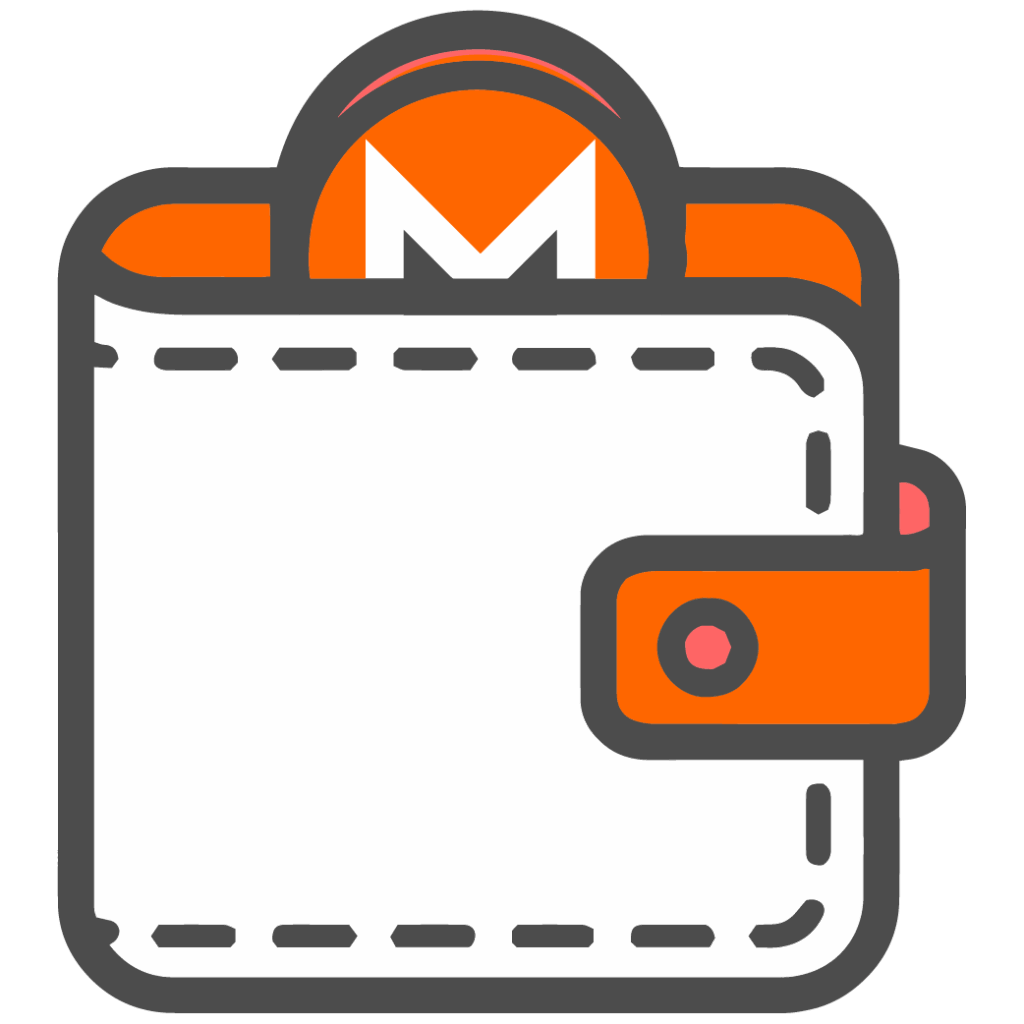

The problem we’ve had for a while is the fact that if you wanted to store your Monero on your own desktop wallet, you needed to know how to use a command line and we did not have a GUI (graphical user interface) wallet for the longest time. Those days are now over as there has been added support for desktop, mobile, and now hardware wallets.
I am going to discuss below the 4 best wallet options for using and storing your Monero offline (and one online option, due to the fact the wallet has a fantastic user experience). I have been highly cautious of keeping my Monero (until recently) on any wallets off of the exchange, due to the fact that it was extremely cumbersome and not very easy to manage in an easy way. Luckily you can now use XMR in your day-to-day transactions as well as securely store them offline. Below are the list of wallets that I have personally used an recommend. Let’s get to it!
#1 LEDGER NANO S
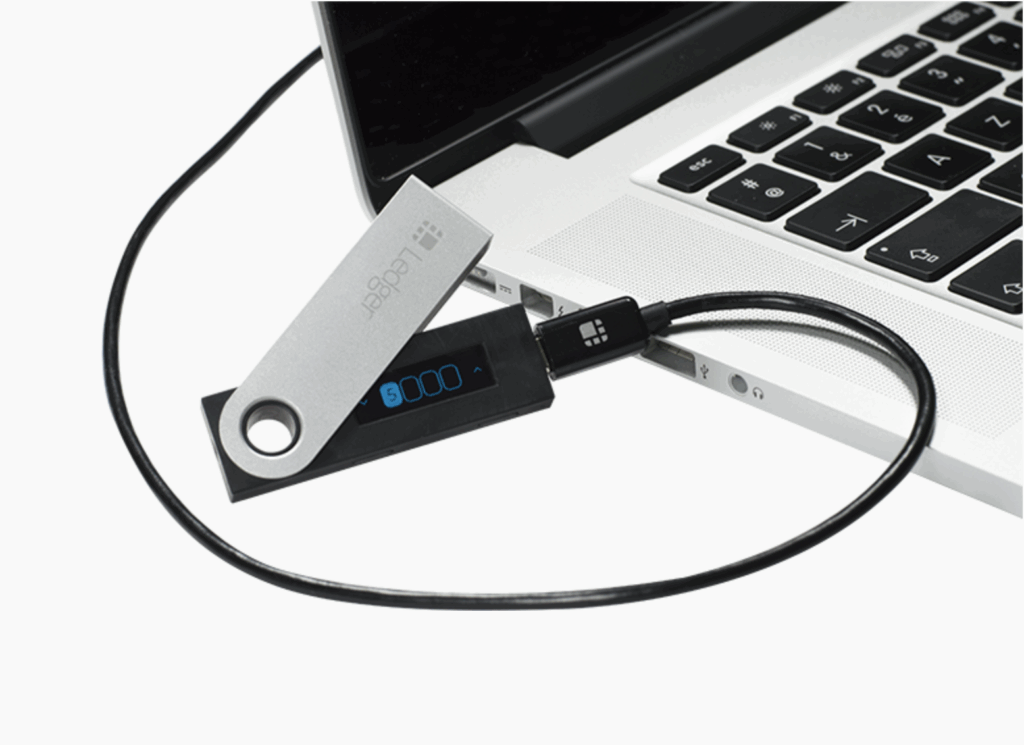

The Nano S is the first hardware wallet to support this coin in being able to keep your private keys offline. When dealing with Ledger Live, it requires you to download the app and then you can use the official desktop wallet from Monero’s website to link it with to manage your funds via graphical user interface. This will ensure that your private keys never leave the device (safest way) yet you can manage balances and authorize transactions from the official wallet when the device is present.
Keep in mind, this will require you to setup a node. What does that mean? It means it will download the entire blockchain onto your computer and index it properly for you to operate the wallet and contribute to the blockchain verification. This does not mean you will “mine” Monero, but it will require your hard drive to stay up to date with the latest version and blocks of the current blockchain.
This is a downside, however, nothing is safer than keeping your private keys offline, so make sure you have enough room on your computer for this task to run and operate. I also wrote a recent article with how this works with Tezos as well, as the process is similar, but still easier than this.
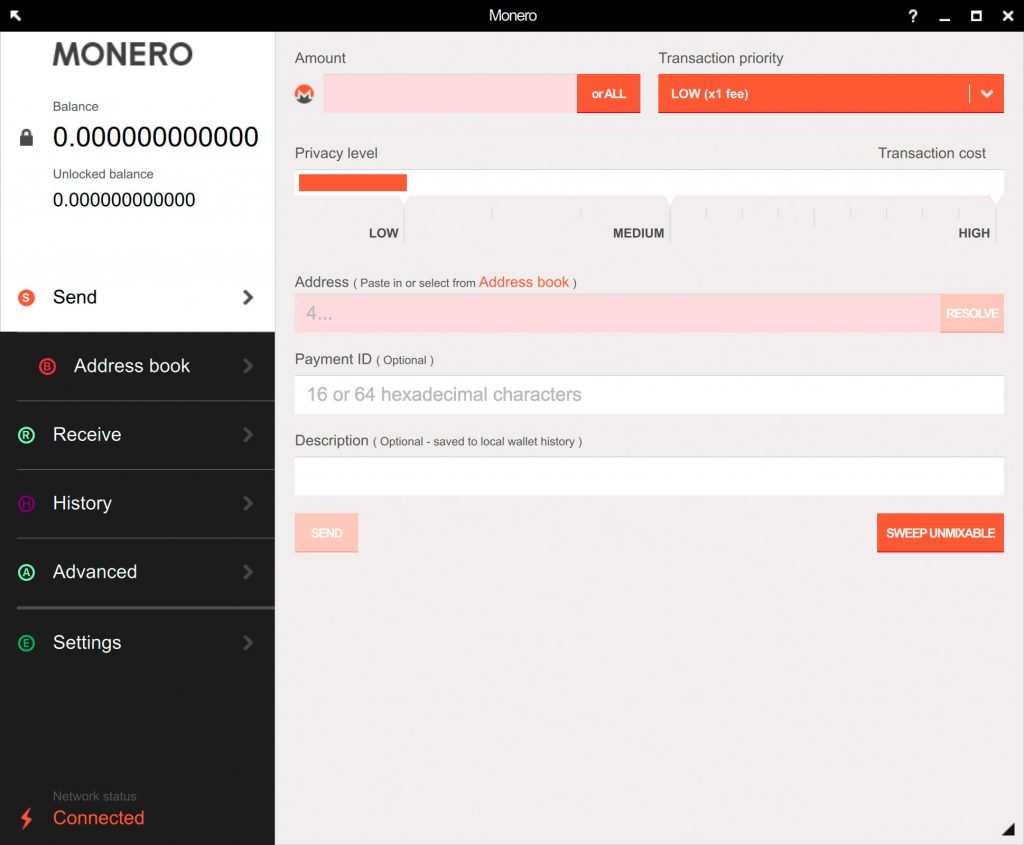

The steps to do this are listed Below:
- Download the Monero wallet for your platform.
- Extract the package you’ve just downloaded.
- Open the monero-gui-v0.14 folder.
- (optional) Move the monero-wallet-gui file to your applications folder.
- Launch the Monero wallet by opening monero-wallet-gui.
On Windows: Click Allow access so the firewall does not block the Monero wallet. - Choose your language.
Set up with Ledger Nano S
- Unlock your Ledger Nano S and open the Monero app.
- Click Create a new wallet from hardware device in the Monero wallet.
- Enter a wallet name.
- Enter 1720000 in the restore height field, then enter 3:100 in the subaddress lookahead field.
- On your Ledger device, choose whether to export the private view key to your computer:
- Approving view key export enables your computer to identify your transactions. However, if your computer is compromised, your transaction privacy might be at risk.
- Rejecting view key export optimizes privacy protection since the view key remains secure on your Ledger device. However, identifying your transactions will be slower.
- You may have to press the device button twice, then wait for your addresses to be generated.
- Enter and confirm an optional password. Then continue to the next page.
- Choose an option for the Daemon settings:
- Start a node to download and validate the full blockchain. This offers the optimal level of privacy and contributes to the strength of the Monero network. This requires at least 60 GB of disk space, and initial synchronization may take several days.
>> Select the first option and leave the rest blank. - Connect to a remote node to immediately use the wallet and preserve your computer resources. However, you will not benefit from the optimum level of privacy, nor will you contribute to the strength of the Monero network.
>> Tick Connect to a remote node, choose a remote node and enter its Hostname and Port. - Start a local node, but use a remote one while your local node synchronizes.
>> Tick Start a node and also choose a remote node and enter its Hostname and Port.
- Start a node to download and validate the full blockchain. This offers the optimal level of privacy and contributes to the strength of the Monero network. This requires at least 60 GB of disk space, and initial synchronization may take several days.
#2 LEDGER NANO X (Best Monero Wallet)
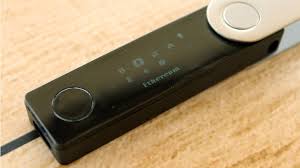

This is the newest iteration of the Ledger hardware wallet and is designed to handle over 100 apps on the device at once, as opposed to the current limit of about 2-4 apps on the Nano S (it depends on the apps you use). You can also manage this wirelessly via bluetooth and the new iOS mobile app for Ledger Live that was recently released.
The same rules and steps apply above, however, once you install the desktop wallet and sync it up, you will be able to manage your Monero from the mobile app and send and receive transactions wirelessly, which is powerful if you use this as an actual currency, as most enthusiasts do.
The device is now currently $119 and is shipping at the end of May 2019, as it will be caught up with it’s inventory by then. I look forward to doing a review for this device in the very near future.
#3 TREZOR MODEL T



The Trezor Model T is a slick device and has some unique security features enabled on the device, including PIN verification on the device itself instead of the web application that is required by it’s predecessor. This device only has one caveat at the moment. Even though the firmware does technically support Monero at this time, there is no GUI to access or manage it, like you can with the Ledger devices above.
So how do you access it? I hope you know how to work the command line, as there are a few lines of code required to generate a wallet and start using it. The link above goes into those commands, but I do not recommend it for new or novice users, as it can get a bit technical.
The good news is, there has been word on their github page that there is currently work on a GUI wallet to be integrated with the Trezor Model T. This is serious progress, as the only other hardware wallets that currently support this is Ledger, and it would be lovely to have a native application built out for this coin. 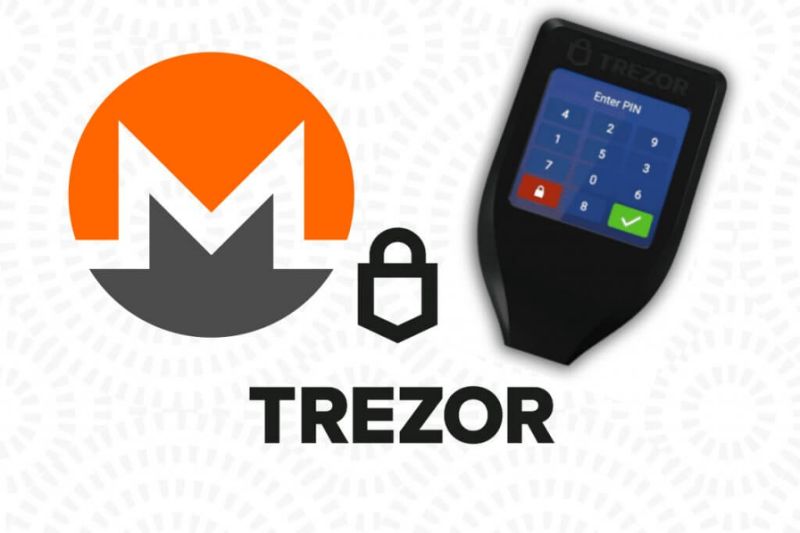

That would be a HUGE advantage to whichever company can pull this off, but it requires intense collaboration and cooperation from the Monero camp to get this done. I am looking forward to see who get this done first, because I will dedicate a specific article to this, as I think it deserves it.
#4 (BONUS) EDGE WALLET
Now, the reason I included this as a bonus, is because this is technically not an offline solution. However, Edge is an amazing mobile and wallet that has an beautiful graphical user interface and supports Monero in an easy and convenient way. This is noteworthy, because I am not aware of any other mobile wallets that do this, and that means if there are any that exist, they are probably not that reputable. 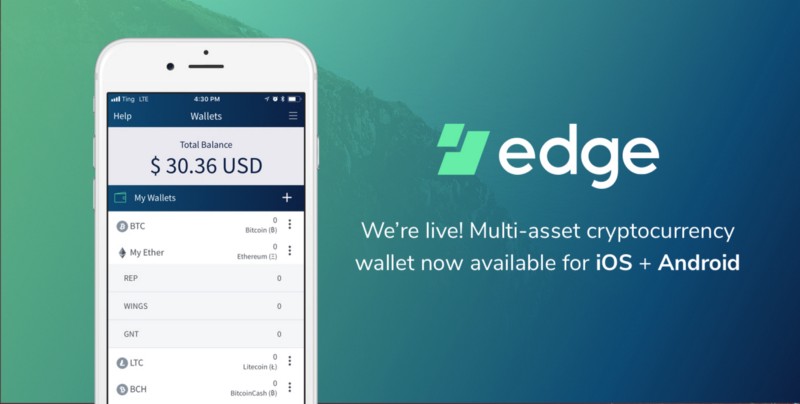

At any rate, There are some screen shots listed here to show you how the user flow works and how this is probably your best solution for sending/receiving Monero in a very easy way.
It should also give your comfort that your private keys will be encrypted on your mobile device, so even if Edge servers do get hacked for any reason, your keys are safe on your mobile device, where only you have access to them. This is one of the more “secure” mobile or hot wallets on the market.
I keep some of my every day spending crypto on this wallet as it feels very robust and safe, but again I cannot stress this enough, nothing beats a hardware wallet in terms of security, and I only typically keep a small amount of crypto on a hot wallet like this at any given time.
CONCLUSION
So what’s the best Monero wallet? All in all, these are the best solutions for securing your Monero offline (and one “hot wallet” option as well). I highly recommend using a hardware wallet for all of your crypto storage solutions and I strongly recommend reading my free e-book, where I go in depth and provide you the 5 best ways to secure your cryptocurrency. It is absolutely free, so click the orange button at the top of the site to get your free download. 

As mentioned above, I have a soft spot for privacy-focused coins and Monero is absolutely one of my favorites. Depending on your technical aptitude, you may just want to use a Ledger listed above, and I will update this article as time goes on with any relevant updates and changes as they develop. Thanks again for reading!
What do you think are the best ways to store your Monero offline? How do you store yours? Sound off below in the comments!
Cheers,
The Crypto Renegade
NOTE: This post may contain affiliate links. This adds no cost to you but it helps me focus on giving as much value as possible in every single post by being compensated for recommending products that help people succeed.
KeepKey Vs. Trezor Vs. Ledger: Which One Should I Buy? (2020)
In this review, I will go over all 3 primary hardware wallets and see the show down of KeepKey Vs. Trezor Vs. Ledger. People always ask me when they realize they need to start taking their private key security seriously is “Which hardware wallet should I buy?“ This questions has been presented to me hundreds, if not thousands of time, and there is no one real “clear” answer. 

It ultimately depends on which coins you want to store and how you want to access them. Do you plan on trading your coins often? Are you simply just trying to “buy and hold” for several months and several years, like a set and forget situation? Are you planning on using the wallet to “bake” or use to contribute to the blockchain on proof-of-stake (POS) networks?
While these are all valid questions, I personally have all 3 wallets and use them regularly. Why? Well, aside from being in the industry, and needing to stay up to date on these devices and their features and capabilities, the main reason is to diversify. What do I mean by this?
Well, if you have (or plan to have) significant holdings, it is smart not to have all of your coins or private keys on one wallet, just in case. Now I’ve created a free e-book that explains how to avoid this which you can get for free HERE, but ultimately if you are in the market for a wallet for the first time, I will tell you the wallet I like to use the best right now in May of 2019.
KeepKey VS. Trezor VS. Ledger
Stay tuned below for the final result, but I go over some pros and cons of each device below. They all are very secure and safe to use, but it really just comes down to preference and really how often you decide to interact with the device. Let’s get right to it!
#1 TREZOR
There are two versions of Trezor: Trezor One and Trezor Model T. The former is the entry level device that came out 2013 and has since received regular firmware upgrades enhancing it’s security and adding new software support for native and 3rd party applications for new coins. In 2018, they released their 2nd-gen product called the “Model T“.
The latter is a larger device with touch screen and is operated by a “Beta” wallet that supports over 1,000 coins between it’s native applications and 3rd party integration. Most recently, they added NATIVE support (which is a huge upgrade in my opinion) for Ethereum (ETH) and Ethereum Classic (ETC). This means it is connected to its unique application that was custom designed by Trezor to manage your ETH accounts directly in the app. Previously, any ETH or ERC-20 based token required to use a 3rd party wallet, which was annoying and cumbersome.
I understand there is a lot of development work that goes into creating and managing any native app, but Ledger and Trezor already had native support for this, (as they should) considering it’s been in the top 3 coins by market cap consistently for years.
Trezor Model T however, is a massive upgrade and adds not only native support for multiple coins, but has added security in the form of a PIN entered in on the touch screen of the device instead of the web app used on the web application. This upgraded device was used for several new features including a password manager and multiple additional security options and ease of use for recovery options on the device itself. Very powerful. Below is the overall feeling I have about the device(s) and the overall team behind them. 

Bottomline: They have upgraded some basic functionality, which is good, and to their credit they have added support for some coins that really need it, such as Monero and Tether. This is of course when their team collaborates and helps build a supported wallet to tie into their code base. They have been building a foundation for the future and that is going to work in their favor as soon as each coin’s respective development team decides to catch up.
-Binance Coin (BNB)
-Monero (XMR)
-Cardano (ADA)
-Ravencoin (RVN)
-Tether (USDT) *Stable coin*
#2 KEEPKEY
Keepkey has always been a favorite of mine, as it’s a solid design and very sleek and stable frame that just feels good when you hold it in your hands. Now let’s get into the nitty-gritty. For years, Keepkey only supported: Bitcoin, Litecoin, Ethereum, Namecoin, Dogecoin, and Dash.
For a hardware wallet that needs to compete in this market place, that needed a serious upgrade. Luckily, they have been making some AMAZING changes and not only added a ton of ERC-20 Support, but more importantly, they are revamping their entire platform to have one fluid, seamless application that integrates all of their core services (See my previous post for details on this).
This is extremely powerful, and a decision that I believe will catapult them ahead of the competition. They are currently in a closed beta, and it is expected that they will be releasing this later in 2019. Stay tuned for news on this.
Bottomline: Keep an eye out for the newest upgrades and the new platform that is coming soon. I hope to gain access to the private beta soon, and if given access, I will ask permission to write a review for your guys. *UPDATE* I have gained access to the beta and have tested it thoroughly, please see below.
-Basic Attention Token (BAT)
-DigixDAO (DGD)
-Augur (REP)
-Polymath (POLY)
-TrueUSD (TUSD) *Stable coin*
#3 LEDGER


Ledger is considered “The most recommended hardware wallet” on the market. The simple reason for this is because it’s cheap (low barrier to entry) and they have been working on upgrading their infrastructure and recently released Ledger Live, which is their new desktop (and iOS) application for managing all of your coins. This is much better than their previous solution of using a chrome extension to access the UI, but Ledger Live is not without it’s quirks.
Overall, the UI is pretty clean and is pretty straight forward in terms of first time setup and detects your device when it’s plugged into the USB port and asks you to authenticate to view the app. The one thing most people don’t understand is the Ledger Nano S has very little RAM, so even though they advertise that it supports over 1,100 coins, you can only have approximately 3 or 4 coin apps installed at once on your device.
You will want to make sure you choose your coins wisely and perhaps get multiple devices if you want to diversify and/or use a 3rd party wallet as mentioned above to manage more coins on the same device.
This however, does not apply to the new Ledger Nano X. In addition to the new design and being able to manage this wirelessly via bluetooth, you can manage your coins anywhere on an iPhone or Android effortlessly. You also can support up to 10x the amount of apps or “coins” to be supported on the same device at once. This is huge if you want to diversify and be able to hold more than 3 or 4 at a time. The device is approximately $119 right now and it should be available to the public within the next 7 days. Very exciting. 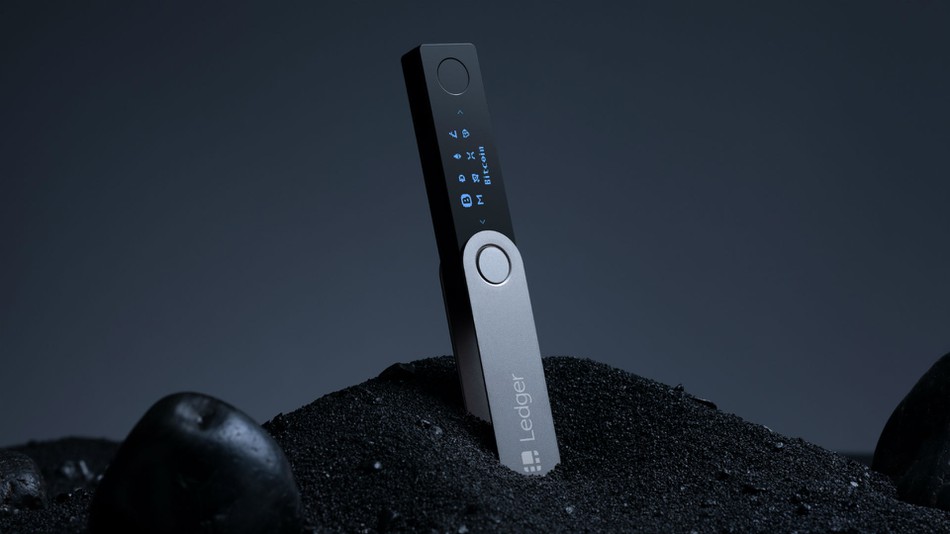

Bottomline: It’s not perfect, but it has made some good improvements over the last year and is continually updating it’s coin support. I will list below some of the coins that are supported on Ledger currently that are not yet available on other platforms, which brings it’s edge.
I will say the best advantage (for me, anyways) that Ledger has going for itself right now is the fact you can “bake” Tezos on your hardware wallet directly, and no other hardware wallet on the market currently supports that. As a firm believer in that project and the fact I can participate in the network, while keeping my private keys offline is a HUGE plus.
-Ripple (XRP)
-EOS (EOS)
-Tezos (XTZ)
-QTUM (QTUM)
-USD Coin (USDC) *Stable coin*
KEEPKEY VS. TREZOR VS. LEDGER CONCLUSION: WHICH ONE SHOULD YOU BUY?
As I mentioned above, there is no definitive “correct” answer, as each person’s needs may differ. Now that I have that disclaimer out of the way, I will provide my personal recommendation if you are a first time hardware wallet buyer and you only need one to start out with. I will say this was NOT an easy decision, but here is what I would recommend to my mother or personal friend who is looking to secure their cryptocurrency in an easy to use way. I would recommend getting a KEEPKEY. 

Why is this my answer? Well, as I updated above, I was invited to participate in their private beta (In depth review on that coming shortly) and I was blown away. ShapeShift (the company that bought KeepKey) has revamped their entire interface. This is extremely noteworthy because before, you had to download multiple applications, and chrome extensions to manage your private keys and it was not the best user experience. This has all changed.
Their new platform that will be coming out very soon and is by far the easiest to use and best hardware wallet experience I have seen yet. Not only can you easily trade coins while keeping your private keys on the device the entire time, managing your portfolio has never been easier. At the time of this writing, it is only $79, and while it is not the cheapest device, it is certainly the highest quality, and best user experience I have seen yet on their new platform.
As far I know, they have plenty of new coins and features in the pipeline, and it is so easy to use, even my grandma could use it and wouldn’t have to explain much. It really is the first plug and play hardware wallet experience I have used (and I’ve used them all). Again, it’s hard to give visualization of my experience, but with my upcoming review, you will see some screenshots and see what I’m talking about.
Overall, it has proven to be the easiest way (so far) to manage my funds safely, and the ONLY way to trade assets without handing my private keys over to an exchange or any other type of wallet or custodian. I highly recommend this hardware wallet if you are making your first purchase and trust me, you won’t regret it.
CLICK HERE TO BUY THE KEEPKEY HARDWARE WALLET DIRECTLY FROM THEIR WEBSITE!
What do you think? Would you have chosen something different? Please let me know below in the comments!
Cheers,
The Crypto Renegade
NOTE: This post may contain affiliate links. This adds no cost to you but it helps me focus on giving as much value as possible in every single post by being compensated for recommending products that help people succeed.
Hot Wallets Vs. Cold Wallets – Which One Should I Use?
In this article, I am going to dive into hot wallets vs. cold wallets – which one should I use? This is an interesting topic, and in fact, it was one of the first topics I started researching when I first discovered cryptocurrency and ultimately inspired me to create this website. As you can see, I have a bias towards cold storage wallets, but what exactly is the difference? I am going to discuss below what the pros and cons of a hot wallets vs cold wallets are and in what scenario you would need to use both. As cryptocurrency payments become ubiquitous, it’s important for your own safety and best security practices in managing your wallets and private keys on an on-going basis. Let’s begin.
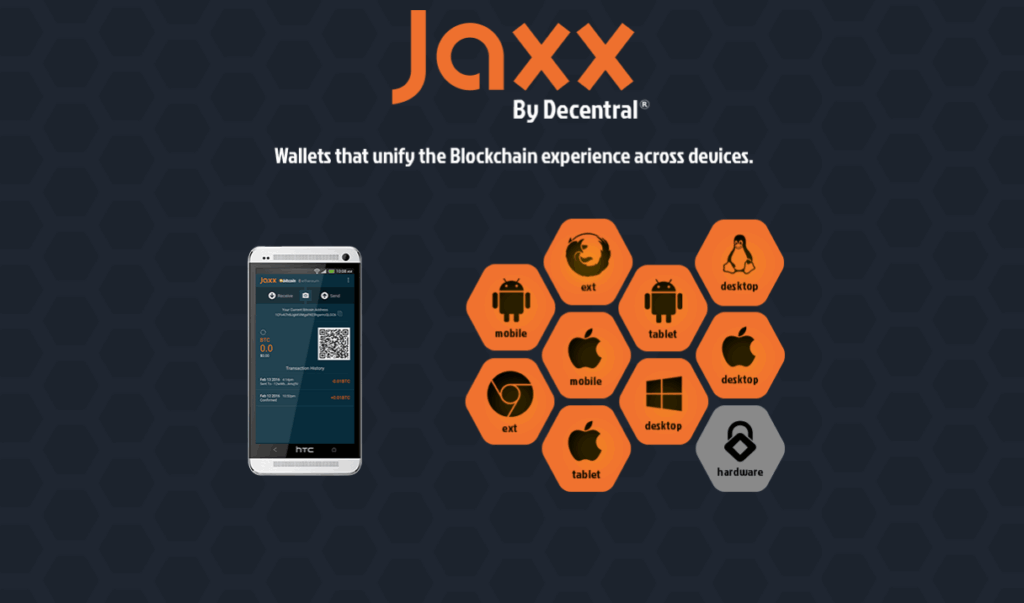

WHAT IS A HOT WALLET?
In short, a “hot wallet” is a digital wallet for your cryptocurrency that is connected or is easily connected to the internet. This provides a lot of convenience for making day to day purchases as most active hot wallets are either on your smart phone or also on a desktop wallet on your computer for easy access for making online purchases. I always use the comparison of using your hot wallet like you would for a wallet in your back pocket that holds your credit cards, ID, and fiat. By a general rule of thumb, you should never hold more money on your hot wallet than you would normally keep in your leather physical wallet on a regular basis. Most people never keep any more than a couple hundred dollars in there at any given time, which is smart. The same applies to a hot wallet.
These wallets are designed for your average day to day spending. This could be at your local merchant down the street, or even if you’re browsing online at and trying to purchase gift cards at a site like bitrefill.com. This is done typically by scanning the screen’s QR code with your smartphone via your own wallet to make a quick transaction and simple transaction or even buy something off Amazon (like millions do everyday), but by using Purse.io, which is a platform that is built on top of amazon but accepts multiple cryptocurrencies as payment, and at a steep discount. Click this link to get some free BTC if you want to get started. Most purchase discounts range anywhere from 15-33% off anything at Amazon through this site. 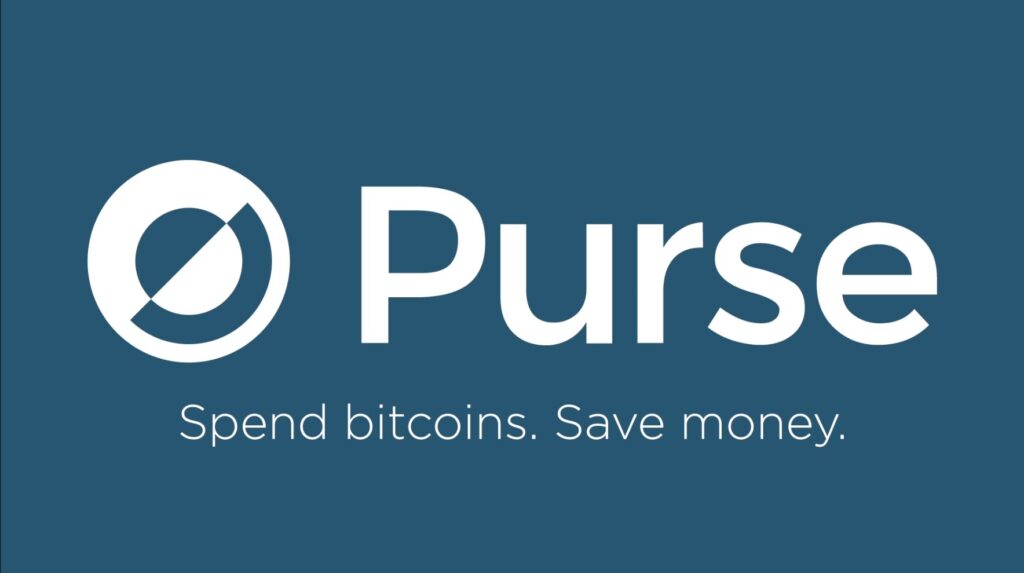

These are just a few examples of how/when you would use your hot wallet for a simple transaction. You can also pre-load Bitcoin (BTC) and Bitcoin Cash (BCH) on Bitpay’s visa debit card. I will link my video review of this from Youtube HERE.
WHAT IS A COLD WALLET?
A “cold wallet” is also a digital (or sometimes physical, in the form of a hardware wallet) wallet that is kept completely offline. Why? Because any funds that are kept offline cannot be hacked or tampered with. You can think of this as virtual bank vault, that is very secure, hard to access, and is designed to store your larger amounts of crypto and primarily your longer term holdings. There are many advantages to having these wallets, and even safer to implement Multi-Sig wallets. It is also recommended to diversify your holdings between multiple hardware wallets when you start to accumulate a vast sum of crypto.
I have a soft spot specifically for hardware wallets as I’ve actually designed and built one for a prominent cryptocurrency company (although due to an NDA, I cannot discuss it yet). But the reason I think it’s important is because using and owning this kind of device is like putting up a nice big middle finger to the big banks and over-reaching governments that tend to control our money supply and bank accounts whenever they see fit. No “authority” should have that kind of power. Hardware wallets are symbolic of sovereignty and self-reliance. That is why literally “becoming your own bank” is so important. One of my favorite quotes in this space is “Whoever controls the people’s means of exchange, controls the people”. This is scary, but very true. When you use cryptocurrency, you are taking personal control and responsibility of your finances, and that is SO empowering. Just writing about it send chills down my spine, but I digress. 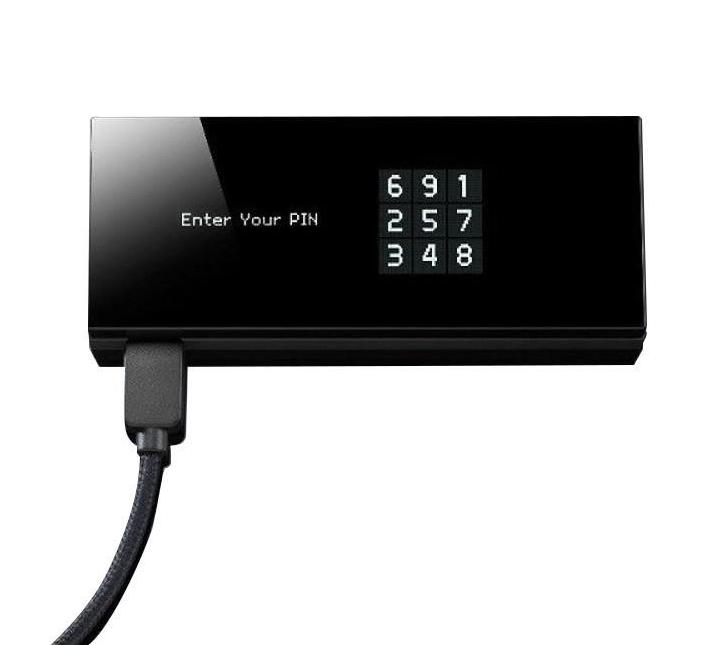

If you are new to hardware wallets, I recommend getting a Keepkey device for beginners. Why? I have been testing their closed beta of their new platform and it is by far the easiest and most user friendly hardware wallet platform I have used (and I’ve used almost every one of them). I think I could teach my grandma how to use it, and that’s saying something. The current platform works fine, but the future platform is very exciting and if you are brand new, you will be pleasantly surprised. I will be writing a review on this platform shortly and I will update this post with a link as soon as I do, so stay tuned.
WHY WOULD I NEED EITHER ONE?
As you can see from the examples of use cases listed above, it is important to protect your cryptocurrency and make it useful and convenient when you need it. But it’s even more important to protect it and secure it when it’s required. As the user adoption begins to snow ball, it’s crucial for everyone to understand that they will need both a hot and cold wallet for their various uses. You can even make transactions online with your hardware wallet connected via USB for even more protection. Most hardware wallets never expose their private keys to the internet when making the transactions by design. This is super helpful because you want to ensure that from every point in a given transaction, you do not want your private keys to be exposed in transit and potentially have your keys copied by a 3rd party before it reaches the intended destination. 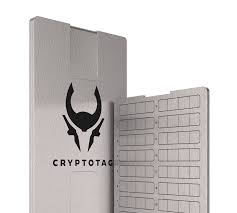

Having said that, most digital wallets on your smart phone are typically secure enough for day to day spending and you shouldn’t be too concerned, so long as you have a trusted wallet for your phone. The top 3 I use on a regular basis is Bitpay, Jaxx, and Blockchain. These are all non-custodial wallets and have security features built in and can have 2FA or (two-factor authentication) enabled to confirm each transaction and will include Touch ID and Face ID, if you enable it.
I already recommended my top hardware wallet for beginners in the previous section, but any of the wallets that I offer through this website, are all trusted and good to use, it just depends on your needs and wants out of a secure air-gapped device.
Please sound off below! What hot and cold wallets do you like? Do you have any other wallets you can recommend not listed above? Let me know in the comments!
Cheers,
The Crypto Renegade
NOTE: This post may contain affiliate links. This adds no cost to you but it helps me focus on giving as much value as possible in every single post by being compensated for recommending products that help people succeed.
Is There A Hardware Wallet That Can Store The Top 30 Cryptocurrencies?
Is There A Hardware Wallet That Can Store All The Top Cryptocurrencies? I get this question a lot, and to be honest, there is no clear way to answer it. It ultimately depends on what you believe is the “Top Cryptocurrency”. As a newcomer into the cryptocurrency market, you start to learn the best practices for managing and storing cryptocurrencies and you will inevitably find that yes, a hardware wallet is your safest and best choice. The second question that usually follows that is, “What is the best one? Which one should I buy?”
The answer is not so simple, but I will lay out some of the pros and cons of each of the featured cryptocurrency hardware wallets being promoted and offered through this website, because they have been personally vetted by myself and my team. Each wallet will support different variations of altcoins, but all of them support 3rd party wallet integration such as MyEtherWallet and Mycelium. These are commonly used for ERC-20 token support and most upcoming STO’s will be supported as well as a lot of them are supported by the same protocol. 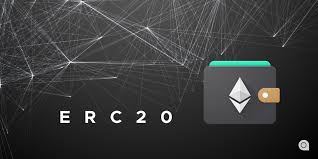

There is currently no hardware wallet that supports every single “Top Cryptocurrency By Market Cap”. Why? Well for one, the market cap rankings tend to shift almost everyday based on trading volume and various product releases, news events, protocol, and network upgrades. However, there have been some pretty consistent coins that, until recently, haven’t had hardware wallet support such as Monero or Ripple.
I am going to list the 3 major hardware wallets below: Trezor, Ledger, and Keepkey. With them, I will have some recent support added to each wallet and a link to each wallet’s fully supported coin list.
This should answer the general questions you have about coin support and you will be able to identify if there is a particular coin you are searching for and whether or not it’s supported. Please note that each wallet is constantly updating support for new (and old) altcoins to be supported, so this list may be outdated as soon as a few months.
#1 TREZOR
There are two versions of Trezor: Trezor One and Trezor Model T. The former is the entry level device that came out 2013 and has since received regular firmware upgrades enhancing it’s security and adding new software support for native and 3rd party applications for new coins. In 2018, they released their 2nd-gen product called the “Model T“. The latter is a larger device with touch screen and is operated by a “Beta” wallet that supports over 1,000 coins between it’s native applications and 3rd party integration.
Most recently, they added NATIVE support (which is a huge upgrade in my opinion) for Ethereum (ETH) and Ethereum Classic (ETC). This means it is connected to its unique application that was custom designed by Trezor to manage your ETH accounts directly in the app. Previously, any ETH or ERC-20 based token required to use a 3rd party wallet, which was annoying and cumbersome.
I understand there is a lot of development work that goes into creating and managing any native app, but Ledger and Trezor already had native support for this, (as they should) considering it’s been in the top 3 coins by market cap consistently for years.
Bottomline: They have upgraded some basic functionality, which is good, and to their credit they have added support for some coins that really need it, such as Monero and Tether. This is of course when their team collaborates and helps build a supported wallet to tie into their code base. They have been building a foundation for the future and that is going to work in their favor as soon as each coin’s respective dev team decides to catch up. 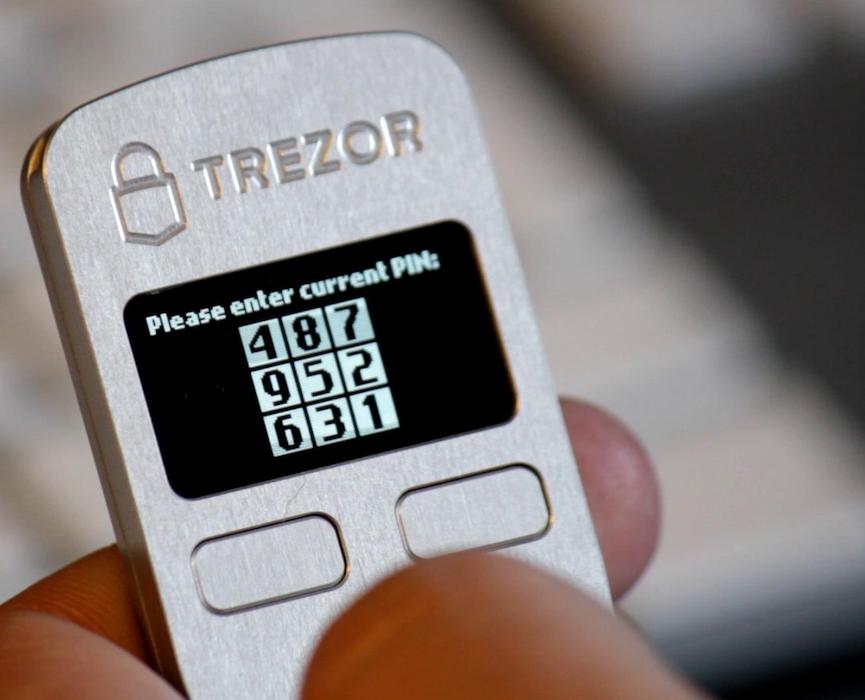

-Binance Coin (BNB)
-Monero (XMR)
-Cardano (ADA)
-Ravencoin (RVN)
-Tether (USDT) *Stable coin*
#2 KEEPKEY
Keepkey has always been a favorite of mine, as it’s a solid design and very sleek and stable frame that just feels good when you hold it in your hands. Now let’s get into the nitty-gritty. For years, Keepkey only supported: Bitcoin, Litecoin, Ethereum, Namecoin, Dogecoin, and Dash.
For a hardware wallet that needs to compete in this market place, that needed a serious upgrade. Luckily, they have been making some AMAZING changes and not only added a ton of ERC-20 Support, but more importantly, they are revamping their entire platform to have one fluid, seamless application that integrates all of their core services (See my previous post for details on this).
This is extremely powerful, and a decision that I believe will catapult them ahead of the competition. They are currently in a closed beta, and it is expected that they will be releasing this later in 2019. Stay tuned for news on this.
Bottomline: Keep an eye out for the newest upgrades and the new platform that is coming soon. I hope to gain access to the private beta soon, and if given access, I will ask permission to write a review for your guys. 

-Basic Attention Token (BAT)
-DigixDAO (DGD)
-Augur (REP)
-Polymath (POLY)
-TrueUSD (TUSD) *Stable coin*
#3 LEDGER
Ledger is considered “The most recommended hardware wallet” on the market. The simple reason for this is because it’s cheap (low barrier to entry) and they have been working on upgrading their infrastructure and recently released Ledger Live, which is their new desktop (and iOS) application for managing all of your coins. This is much better than their previous solution of using a chrome extension to access the UI, but Ledger Live is not without it’s quirks.
Overall, the UI is pretty clean and is pretty straight forward in terms of first time setup and detects your device when it’s plugged into the USB port and asks you to authenticate to view the app. The one thing most people don’t understand is the Ledger Nano S has very little RAM, so even though they advertise that it supports over 1,100 coins, you can only have approximately 8 or 9 coin apps installed at once on your device. You will want to make sure you choose your coins wisely and perhaps get multiple devices if you want to diversify and/or use a 3rd party wallet as mentioned above to manage more coins on the same device.
Bottomline: It’s not perfect, but it has made some good improvements over the last year and is continually updating it’s coin support. I will list below some of the coins that are supported on Ledger currently that are not yet available on other platforms, which brings it’s edge. 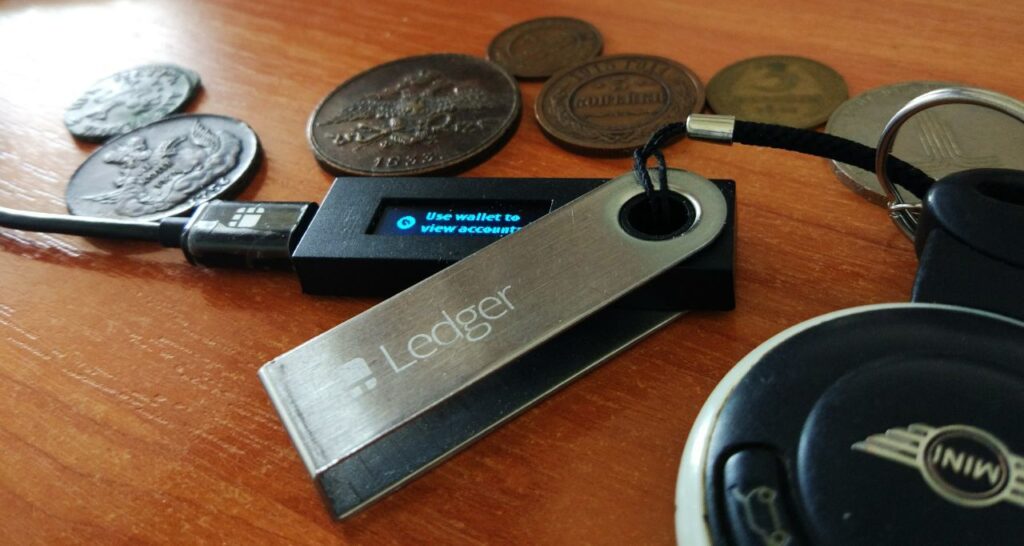

-Ripple (XRP)
-EOS (EOS)
-Tezos (XTZ)
-QTUM (QTUM)
-USD Coin (USDC) *Stable coin*
CONCLUSION
I realize that may not answer all of your questions or solve all of your problems, but it really just comes down to preference. If you already know what coins you plan to accumulate, then I would click the links under each section that has the “Newest Notable Coins Added” to a link to each coin supported by each wallet, currently. I use every single one of these and have different coins on each depending on what my needs are and what exchange I accumulate them from.
It might be a good idea to place your wallets in terms of “buckets”. What I mean by that is if you plan to trade and hold long term, perhaps it’s best to have one wallet for each purpose. This not only allows you to diversify, but it keeps things organized based on what your short term and long term goals are for accumulating and for accessing exchanges.
If you have any questions or comments on this post, please sound off below! I’d love to hear from you! Until next time…
Cheers,
The Crypto Renegade
NOTE: This post may contain affiliate links. This adds no cost to you but it helps me focus on giving as much value as possible in every single post by being compensated for recommending products that help people succeed.
- ‹ Previous
- 1
- 2

